#the basis of buddhism
Photo
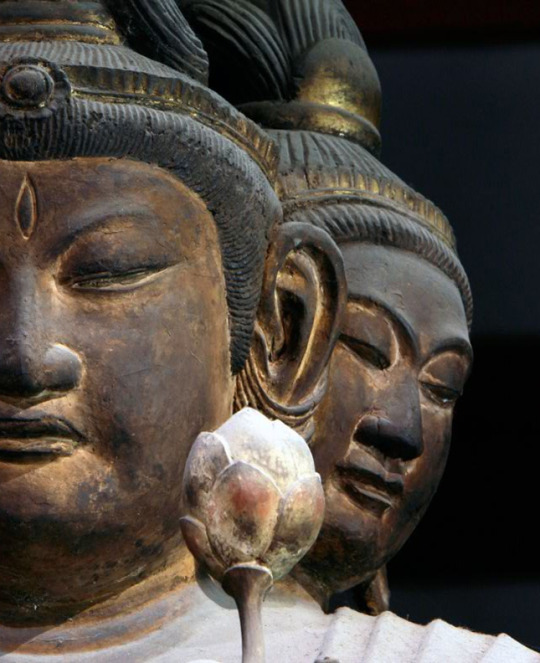
The Quest for Buddhism (111)
Buddhist cosmology
Brahmaviharas - The heart of compassion [Part1]
The heart of compassion is the basis of Buddhism. “May all living beings be blessed (Bhava: Sabbhe-Sattar. Bhavantu)”.
In the Tevijja Sutta, "The Threefold Knowledge" in the Digha Nikaya (DN) or "Collection of the Long Discourses", a group of young Brahmins consulted Lord Buddha about the methods to seek fellowship/companionship/communion with Brahma. He replied that he personally knows the world of Brahma and the way to it, and explains the meditative method for reaching it by using an analogy of the resonance of the conch shell of the astamangala:
A monk suffuses the world in the four directions with a mind of benevolence, then above, and below, and all around – the whole world from all sides, completely, with a benevolent, all-embracing, great, boundless, peaceful and friendly mind … Just as a powerful conch-blower makes himself heard with no great effort in all four directions, so too is there no limit to the unfolding of this heart-liberating benevolence. This is a way to communion with Brahma.
The Buddha then said that the monk must follow this up with an equal suffusion of the entire world with mental projections of compassion, sympathetic joy, and equanimity (regarding all beings with an eye of equality).
In the two Metta Suttas of the Anguttara Nikaya (AN), the Buddha states that those who practice radiating the four immeasurables in this life and die "without losing it" are destined for rebirth in a heavenly realm in their next life. In addition, if such a person is a Buddhist disciple (Skt: śrāvaka, Pāli: sāvaka) and thus realises the three characteristics of the five aggregates, then after his heavenly life, this disciple will reach nirvana. Even if one is not a disciple, one will still attain the heavenly life, after which, however depending on what his past deeds may have been, one may be reborn in a hell realm, or as an animal or hungry ghost.

仏教の探求 (111)
仏教の宇宙論
四無量心 (しむりょうしん) 〜慈悲のこころ(その1)
慈悲のこころは仏教の基本である。「生きとし生けるものが幸せでありますように (巴: サッベ-サッター・バーヴァントゥ・スッキータッター)」というのが、その基本となる精神である。
長部 (ちょうぶ、巴: ディーガ・ニカーヤ/DN)の「三重の知識」、三明経 (さんみょうきょう、巴: テーヴィッジャ・スッタ)に、若いバラモンの一団が梵天 (ぼんてん, 巴: ブラフマー) との交わり・友交・交信を求める方法についてブッダに相談する場面がある。ブッダは、梵天の世界とそこへの道を自ら知っていると答え、そこに至る瞑想法を法螺貝の共鳴になぞらえて説明した。
僧侶は四方の世界を慈悲の心で満たし、次に上、下、そして周り、つまり四方から完全に、慈悲深く、すべてを包み込み、大きく、無限に、平和で友好的な心で全世界を満たす・・・ちょうど、強力な法螺吹きは四方で大きな努力なしに自分の声が聞こえるように、この心を解放する慈悲を展開するのに制限はないのである。これは梵天との交信への道である。
そして、ブッダは、僧侶はこれに続いて、慈悲、同情の喜び、平静 (すべての存在を平等な目で見る) の心の投影を全世界に等しく充満させなければならないと述べている。
増支部 (ぞうしぶ、巴: アングッタラ・ニカーヤ/AN) の二つの慈経(メッタ・スッタ)では、現世で四無量心 (しむりょうしん、梵: アプラマーニャ, 巴: アッパマナー) を放ち、「失わずに」死んだ者は、来世で天界 (梵天界:ブラフマー・ロカ) に生まれ変わるように定められていると述べている。また、そのような人が声聞 (しょうもん、梵:シュラーヴァカ、巴: サーヴァカ、仏弟子のこと) であり、それによって五大要素の三つの特性を実現すれば、その仏弟子は天上界の後に涅槃に達することになる。弟子でなくても天寿を全うし、その後、過去の行いによって地獄に生まれ変わるか、動物や餓鬼に生まれ変わるかである。
#heart of compassion#buddha#buddhism#brahmaviharas#philosophy#nature#buddhist cosmology#the basis of buddhism#meditation#karma#reincarnation#brahma
120 notes
·
View notes
Text
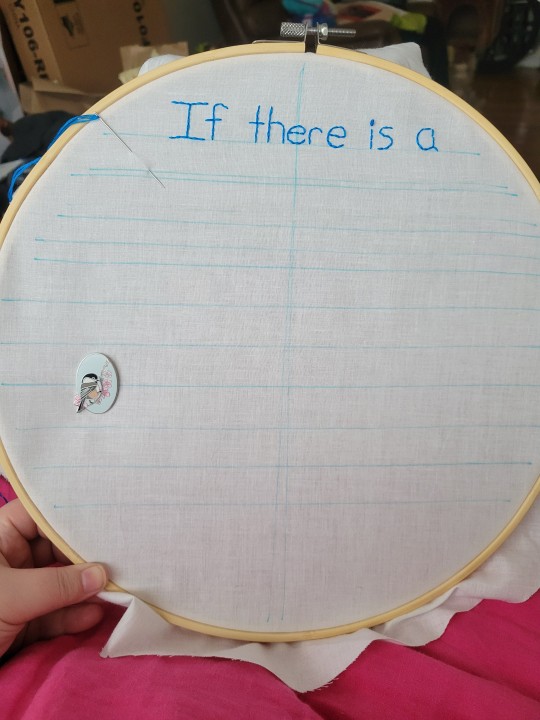
Embroidering "if there is a remedy, what is the use of frustration? If there is not a remedy, then what is the use if frustration?" again (this time with smaller lines and letters) to give to my teacher at the temple cuz I'm really grateful for his teachings.
Temple was so empty today there was only five of us there (usually there's 15-20 people) for some reason so we had a casual teaching. Next week we celebrate Tibetan new year! I'm hoping to have this done in time to give to him as a new year's gift. We'll see how that goes.
I considered embroidering it in Tibetan because Geshe-la is a Tibetan refugee but I was afraid of unknowingly making a spelling mistake or something. I'm trying to learn Tibetan though so maybe later I'll be able to do it justice!
#this quote lives rent free in my head#i think about it on a regular basis#v's fiber arts tag#embroidery#buddhism tag#shantideva
14 notes
·
View notes
Text
uhhh thinkin about how mizu and taigen's relationship was described as "this meeting of the minds, this meeting of the swords, that they could not share with anybody else" in one of the netflix articles about the show
and i'm going crazy because YEAH they're both equally invested about swords and fighting in a way that nobody else in their lives are. and that's just. so important considering we're talking about mizu, who sees her sword as her own soul.
and it's not JUST mizu who's obsessed with fighting. taigen is too. cuz like after their duel at the shindo dojo, as taigen is examining his bald spot in the mirror where mizu cut off his hair, he literally interrupts his own turmoil over losing his honour, just to express his awe, openly admiring mizu's skill DESPITE the fact that mizu just beat his ass and stripped his honour and status from him


then in the next episode, mizu says a very similar line when she examines the cut flower that fowler had pinned to heiji shindo's robe.

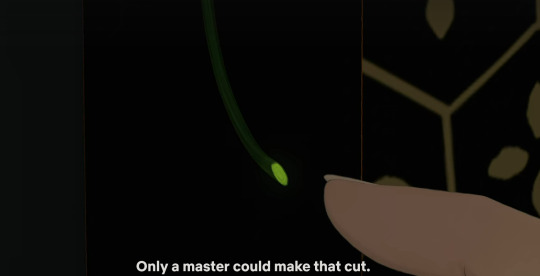
this was also such a sudden thing to notice in the middle of their conversation (my interpretation of this is that it hints to fowler's own skills with a blade, and gives mizu information about her enemy being a formidable opponent), but the fact that mizu had such a keen eye and managed to hone in on such a tiny detail from like a foot or two away is interesting because it shows us just how attentive mizu is, especially when it comes to blades and anything to do with them
to mizu (when she's not spiralling and agonising over her own self-hatred and the way the world treats her), swords are not a mere tool for revenge, but an art form which she is fascinated by and loves and admires. we see this from time to time, during rare moments of respite, like when she admires the duel in the beginning of ep4
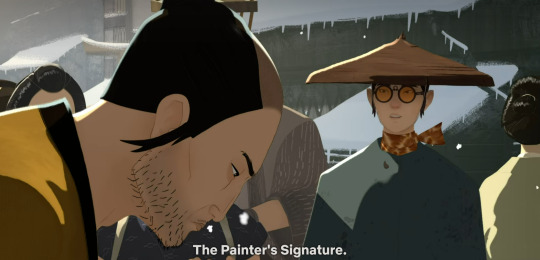
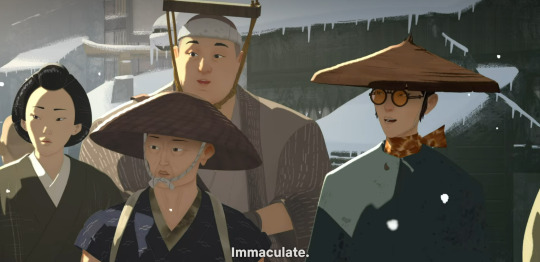
mizu also takes to heart all the teachings from her years training, while taigen is interestingly less strict about them, basically disregarding some of those teachings as mere pedantry, or even if he doesn't actually really think so, he at least tells mizu as much in his attempt to comfort her after her sword breaks

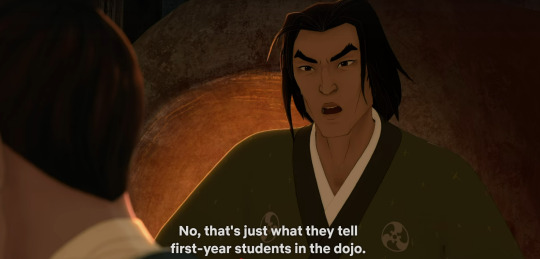
but that doesn't mean he doesn't care for the more formal aspects of his training at all. because in ep3 when he says this


this line about mount sumeru is not talking about the literal mountain in front of them, but is a recitation of a line from the lotus sutra, which is among the mahayana sutras that they learned as part of their spiritual training, as zen buddhism forms a lot of the basis for samurai doctrines and philosophy. the sutra given more emphasis in the show is the heart sutra that mizu writes on her body in ep7 during her rite of rebirth
so taigen saying this line, as i see it, is a way to bond with mizu, or at least make conversation over their shared knowledge, as we see him await a reaction as soon as he says this. but mizu gives him none, and he looks disappointed/annoyed/frustrated or what have you as he watches her walk off without a word
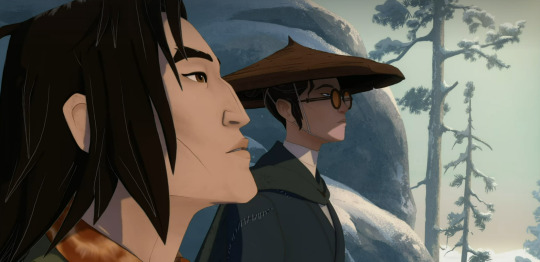
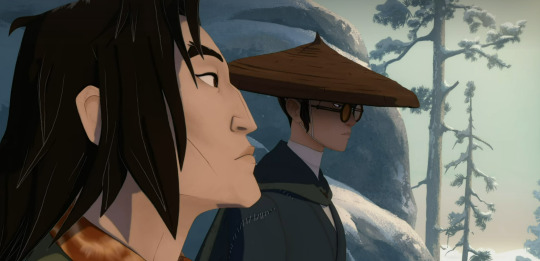

also we see a little more of their shared knowledge of swordsmanship in the last episode when it's clear that mizu has been training ringo in sword fighting techniques
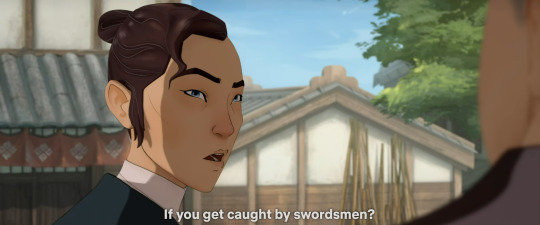

and later taigen recognises it instantly


they're both nerds about swords and fighting!!! they both respect each other's skills!!!


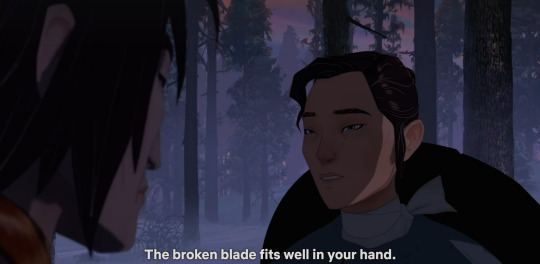
GOD i really hope in future episodes they get to bond some more over their shared passion and common training and just samurai camaraderie in general!!! mizu clearly loves the artistry of sword fighting so much, she deserves to have a confidant who shares that with her, someone she can talk openly about these things to!!!
because like remember when mikio was telling her about the naginata, she looked soooo uwu in love!!! admiring her husband as he showed off the weapon and told her the benefits of using it!!! believing at the time that she'd found a match who she could openly share her love of martial arts with!! she was having so much fun sparring him too. everyone says fighting is part of her love language and YES it IS!!!

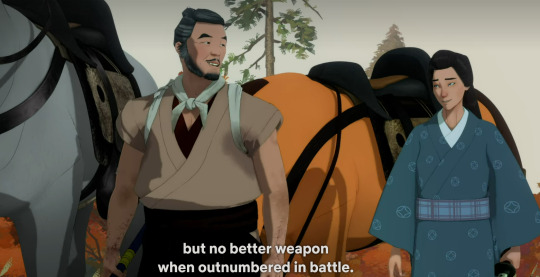
except the difference is that mikio—due to, among other things, their large age difference and subsequent gap in life experience—believes he is mizu's teacher, rather than her equal. this is the role he's readily taken throughout their marriage, from teaching her how to throw a knife to cut down fruit (not like she needed that particular lesson), to teaching her equestrian skills.
meanwhile taigen and mizu were both kids growing up poor in the same backwater fishing village, which means that they are and always have been PEERS. and this becomes even more pronounced once taigen is stripped of his giant ego and unlearns his prejudice, allowing them both to fully respect each other and view each other as equals

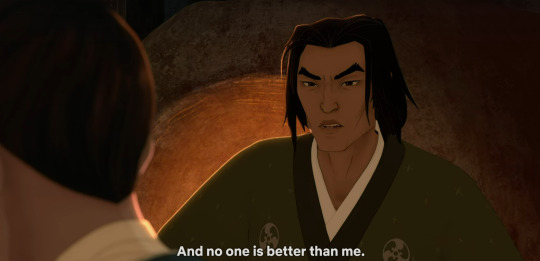

which is again why it frustrates taigen when mizu admits later in this scene that she basically doesn't care about saving the shogun. like he gets mad because it upends his initial belief in their shared goals and aligned values, believing them both to be samurai of equal standing and honour.
ALSO i'd like to add, that though mizu is the better swordsman as we see her win all their brawls and matches, she doesn't surpass him by that much, and mizu knows this.
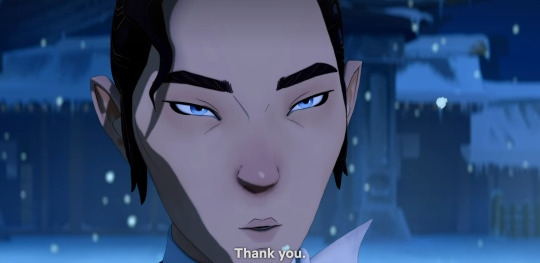

these words coming from mizu is such a huge compliment all things considered, acknowledging that he was strong enough to deserve fighting her, because shortly before this mizu was just about to say "no one has given me much of a challenge" only for taigen to enter the scene and, well, challenge her.
now combine this with her saying that chiaki's broken blade suits him well, giving to him HER sword which SHE made AND won, as a surety, promising him a duel that he "deserves". it's proof that even though she finds taigen an annoying brat and oftentimes an obstacle to her mission for revenge, she DOES respect him and does value his skills.
IN CONCLUSION nobody else is on their level, nobody else shares their love of swordsmanship and that is such an important factor to their bond and the way they relate to each other. i rest my case your honour
#mizu x taigen#taigen x mizu#taimizu#taizu#blue eye samurai#mizu blue eye samurai#taigen blue eye samurai#blue eye samurai meta#i caaaant stop thinking about THEM#like im soooo sorry im being annoying and cant shut up about these two#the brainrot is real yall. pray for me in these trying times#shut up haydar#meta dissertations.pdf#fandom.rtf
1K notes
·
View notes
Text
Incomplete vs. overshoot
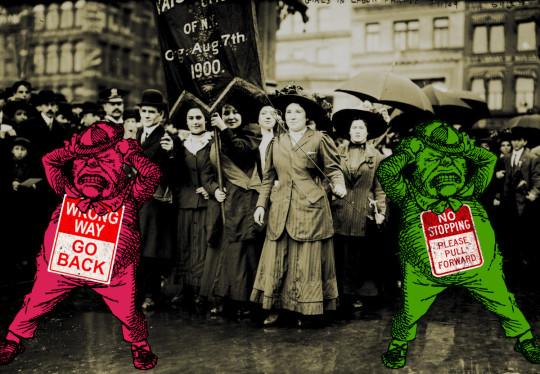
I'm on tour with my new novel The Bezzle! Catch me TONIGHT in Seattle (Feb 26) with Neal Stephenson, then Portland, Phoenix and more!

You know the "horseshoe theory," right? "The far-left and the far-right, rather than being at opposite and opposing ends of a linear continuum of the political spectrum, closely resemble each other, analogous to the way that the opposite ends of a horseshoe are close together":
https://en.wikipedia.org/wiki/Horseshoe_theory
It's a theory that only makes sense if you don't know much about the right and the left and what each side wants out of politics.
Take women's suffrage. The early suffragists ("suffragettes" in the UK) were mostly interested in votes for affluent, white women – not women as a body. Today's left criticizes the suffrage movement on the basis that they didn't go far enough:
https://www.npr.org/2011/03/25/134849480/the-root-how-racism-tainted-womens-suffrage
Contrast that with Christian Dominionists – the cranks who think that embryos are people (though presumably not for the purpose of calculating a state's electoral college vote? Though it would be cool if presidential elections turned on which side of a state line a fertility clinic's chest-freezer rested on):
https://www.wnycstudios.org/podcasts/otm/segments/how-alabama-ivf-ruling-was-influenced-christian-nationalism-on-the-media?tab=summary
These people are part of a far-right coalition that wants to abolish votes for women. As billionaire far-right bagman Peter Thiel wrote that he thought it was a mistake to let women vote at all:
https://www.cato-unbound.org/2009/04/13/peter-thiel/education-libertarian/
Superficially, there's some horseshoe theory action going on here. The left thinks the suffragists were wrong. The right thinks they were wrong, too. Therefore, the left and the right agree!
Well, they agree that the suffragists were wrong, but for opposite reasons – and far, far more importantly, they totally disagree about what they want. The right wants a world where no women can vote. The left wants a world where all women can vote. The idea that the right and the left agree on women's suffrage is, as the physicists say, "not even wrong."
It's the kind of wrong that can only be captured by citing scripture, specifically, A Fish Called Wanda, 6E, 79: "The central message of Buddhism is not 'Every man for himself.' And the London Underground is not a political movement. Those are all mistakes, Otto. I looked them up."
Or take the New Deal. While the New Deal set its sites on liberating workers from precarity, abuse and corruption, the Dealers – like the suffragists – had huge gaps in their program, omitting people of color, indigenous people, women, queer people, etc. There are lots of leftists who criticize the New Deal on this basis: it didn't go far enough:
https://livingnewdeal.org/new-deal-and-race/
But for the past 40 years, America has seen a sustained, vicious assault on New Deal programs, from Social Security to Medicare to food stamps to labor rights to national parks, funded by billionaires who want to bring back the Gilded Age and turn us all into forelock-tugging plebs:
https://pluralistic.net/2022/11/06/the-end-of-the-road-to-serfdom/
If you only view politics as a game of elementary school cliques, you might say that the left and the right are meeting again. The left says Roosevelt got it wrong with the New Deal (because he left out so many people). The right says FDR was wrong for doing the New Deal in the first place. Therefore, the left and the right agree, right?
Obviously wrong. Obviously. Again, the important thing is why the left and the right think the New Deal deserves criticism. The important thing is what the left and the right want. The left wants universal liberation. The right wants us all in economic chains. They do not agree.
It's not always just politics, either. Take the old, good internet. That was an internet defined by technological self-determination, a wild and wooly internet where there were few gatekeepers, where disfavored groups could find each other and make common cause, where users who were threatened by the greed of the shareholders behind big services could install blockers, mods, alternative clients and other "adversarial interoperability" tools that seized the means of computation.
Today's enshitternet – "five giant websites, filled with screenshots of the other four" (h/t Tom Eastman) – is orders of magnitude more populous than that old, good internet. The enshitternet has billions of users, and they are legally – and technologically – prevented from taking any self-help measures when the owners of services change them to shift value from users to themselves:
https://pluralistic.net/2023/02/19/twiddler/
The anti-enshittification movement rightly criticizes the old, good internet because it wasn't inclusive enough. It was a system almost exclusively hospitable to affluent, privileged people – the people who least needed the liberatory power of technology.
Likewise pro-enshittification monopolists – billionaires and their useful idiots – deplore the old, good internet because it gave its users too much power. For them, ad-blocking, alternative clients, mods, reverse-engineering and so on were all bugs, not features. For them, the enshitternet is great because businesses can literally criminalize taking action to protect yourself from their predatory impulses:
https://pluralistic.net/2022/10/20/benevolent-dictators/#felony-contempt-of-business-model
Superficially, it seems like the pro- and anti-enshittification forces agree – they both agree that the old, good internet was a mistake. But the difference that matters here is that the pro-enshittification side wants everyone mired in the enshitternet forever, living with what Jay Freeman calls "Felony contempt of business-model." By contrast, the disenshittification side wants a new, good internet that gives every user – not just a handful of techies – the power to decide how the digital systems they work use, and to be able to alter or reconfigure them to suit their own needs.
The horsehoe theory only makes sense if you don't take into account the beliefs and goals of each side. Politics aren't just a matter of who you agree with on a given issue – the real issue is what you're trying to accomplish.

If you'd like an essay-formatted version of this post to read or share, here's a link to it on pluralistic.net, my surveillance-free, ad-free, tracker-free blog:
https://pluralistic.net/2024/02/26/horsehoe-crab/#substantive-disagreement
#pluralistic#politics#suffrage#womens rights#new deal#civil rights#race#enshitternet#new good internet#old good internet
123 notes
·
View notes
Text
Mrigashira: The Truth Is Subjective?
This is part 3 of my Mrigashira trilogy (here's part 1 & part 2)
I had previously explored the Mrigashira tendency to speak the truth and often be considered crazy for it. I thought I'd expand on this nature for this post as well.
Being truthful can mean many different things. The truth is also context-bound and what one exposes can differ based on the circumstances.
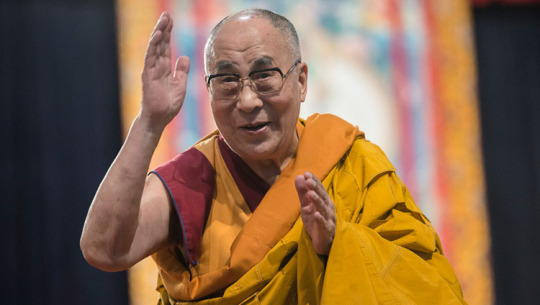
Dalai Lama- Mrigashira Mercury conjunct Rising
He has been at the forefront of the Tibetan independence movement, He has spoken up about nonviolence and his work includes a focus on the environment, economics, women's rights, non-violence, inter-faith dialogue, physics, astronomy, Buddhism and science, cognitive neuroscience, reproductive health and sexuality. He's literally one of the most admired people in the world and is considered a Bodhisattva. Being truthful or bringing attention to the truth is a big part of his life. This is not to say he isnt shady tho
He is also a very complicated figure. He used to get a personal income of over $1 million every year from the CIA for about 2 decades between 1959 and 1974?? He inappropriately touched Lady Gaga when they were on stage together, there is also a video of him asking a young boy to "suck his tongue" 🤮🤢
sometimes the truth isn't really the truth. whatever you believe to be true is what is true to you even if it does not have any basis in reality. one terrifying example of that is the Aum Shinrikyo cult leader Shoko Ashara

Shoko Asahara- Mrigashira Moon
He was the leader of the infamous cult Aum Shinrikyo, that carried out the 1995 Tokyo subway sarin gas attack and several other attacks. Asahara declared himself as God and led his followers into believing that the end of the world was coming. Its a bizarre mix of new age conspiracy theories, religious syncretism, enlightenment, doomsday mentality and pure sadism.
He and several other leaders of the cult were executed in 2018 after more than 2 decades in prison.
It goes to show how "truth" is very subjective. Shoko was a megalomaniac who was fcked in the head, yet he managed to convince manyyy people of his teachings and even got them to do whatever he wanted them to do??

Donald Trump, Mrigashira Sun conjunct Rahu, popularised the term "fake news". it is so interesting to me that a man generally known as a liar will have Mrigashira of all naks and esp have it conjunct Rahu, the planet of illusion. Astrology is funny like that sometimes. He was very forceful in spreading his truth, even though that truth was bigoted, racist, classist and misogynistic. And in one way, he helped expose people who supported him bc what is worse than being known as a Trump supporter? That is enough to gauge someone's character and nature.

Idi Amin- Mrigashira Moon
mrig nakshatra is actually present in the luminaries of many dictators/fascists/terrible leaders. Idi did not really have any specific ideology, he was a brutal narcissist who got a kick out of murdering people even at the expense of his nation's well being.
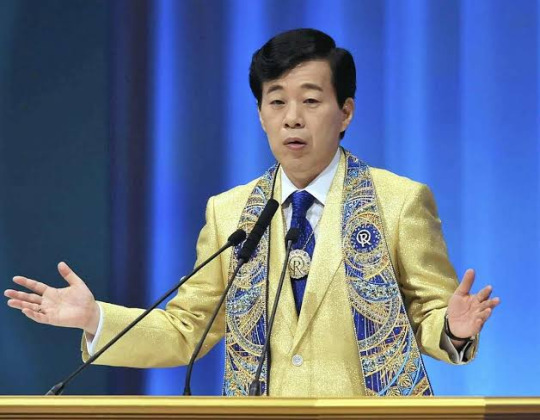
Ryuho Okawa- Mrigashira Moon & Venus
He was the leader of a cult called Happy Science and declared himself to be God. one thing that stands out to me with mrig natives is how since Mrigashira nak represents the fall from heaven, i.e, the beginning of life on earth in some ways, its natives tend to be obsessed with truth telling, I had explored more positive manifestations of this in part 1 but this tendency can be manifest in very bad ways as we see from these examples as "truth" is very subjective. Okawa was telling his truth bc he genuinely believed he was God but does that make it right?

Jennifer Lawrence, Mrigashira Moon
JLaw has always struck me honest, maybe a little too honest but that's what made her so likable initially and unlikable later on. I had mentioned this in part 1 as well about how the presence of a Mrig native often triggers other people or makes them feel threatened. part of it is the fact that Mrig has serpent yoni and subconsciously we sense the energy of other people's yoni animals and react a certain way in their presence. people with predator yoni animals strike us as intimidating. most people hate snakes and will probably kill them if they see them bc it could be dangerous and this is honestly how society reacts to a lot of serpent yoni women. So many sex symbols have serpent yoni in their big 3 (Pamela Anderson, Marilyn Monroe, Angelina Jolie, Brooke Shields etc) society seems enchanted by them but is also quick to tear them apart. people feel deeply uncomfortable with these natives is what I have noticed. JLaw's reputation suffered after she had been exposed as a try hard "cool girl". but tbh, there are celebs out there who are far more annoying and done far worse things, how come JLaw's hated for being the "cool girl"?? part of it could be that we all see our collective shadow in her, the hot sexy talented woman who seems to be a messy clumsy loser and is also "one of the boys". JLaw grew up on a farm with 2 brothers, its only natural that her personality is a little brutish and unladylike, it gets old really quick bc it seemed gimmicky but it is interesting to me how someone can be ripped apart for something so small??
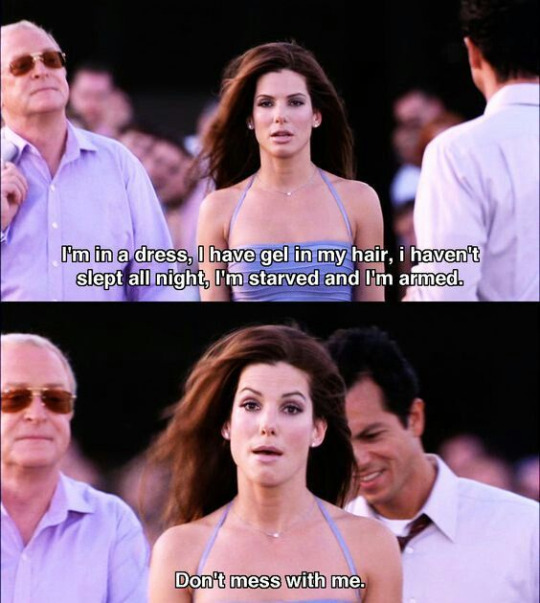
Sandra Bullock, Mrigashira Stellium
Sandra plays these unladylike but blunt and honest characters a lot (While You Were Sleeping, Two Weeks Notice, Miss Congeniality movies etc)

Sonam Kapoor- Mrigashira stellium (sun mercury & mars)
Sonam is known in the Indian media for saying whatever comes to her mouth lol, that means she makes a lot of dumb comments (she once said her being a nepo baby was the result of good karma from past lives lol and that people think you're a good actor if youre not good looking which is basically implying that she isnt considered a good actor bc she's too good looking lmfao) but she does have moments of radical no bullshit honesty, like the time she wrote an essay talking about body image
Monica from Friends always called out everyone's bullshit. She was played by Courteney Cox who is Mrigashira Sun

Leah Remini Mrigashira Sun
she exposed the dark secrets of Scientology through her memoir and docu series. this is another form of Mrigashira truth telling. exposing the darkness, evil and injustice in this world.

North West, Mrigashira Stellium (Sun & Rising)
North exposing her family is a bit of a running joke, she revealed she has dyslexia on IG live which pissed Kim off and in general she's known for her bluntness and calling out her mom esp. Kim even said that North is her "lesson" and that North "intimidates her" and how North is Kanye's twin (Kanye is also Mrigashira Sun)

Tupac Mrigashira Sun
honestly watch any interview and you can see how honest and sincere Tupac was (sidenote: isnt he sooo handsome??<33). i cant pinpoint to specific moments but Tupac was so young and sooo beyond mature?? idk if anybody in their early 20s has this kind of articulation anymore.

Paula Abdul- Mrigashira Sun
this is a bit of a strange case. Paula claims to have been in a plane crash in 1992 which left her with a spinal cord injury and forced her to take about 10 years off before she restarted her career as a judge on American Idol. she has talked about this many many times in the last 2 decades. except of course that there is zero evidence of this plane crash. obviously, she could just be lying but why lie about something that could so easily be proven? i think sometimes Mrig natives have a tendency to delusionally believe what they say. i have no doubt that Paula is convinced that she was in a plane crash and that it ruined her music career but its not objectively true.
Donald Trump & even Kanye West (both Mrig Sun) are other examples of celebrities who talk about wildly stranger things that they believe to be true.
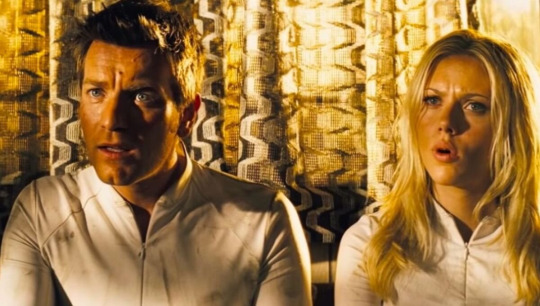
Ewan McGregor- Mrigashira moon
In the movie The Island, Ewan's character discovers that everything about his existence is a lie and that he and the other inhabitants are human clones.
I feel like this trope of realizing lies and "waking up" is tied to Mrigashira's nature.

in the movie Passengers, this happens in reverse, JLaw wakes up and then learns the truth
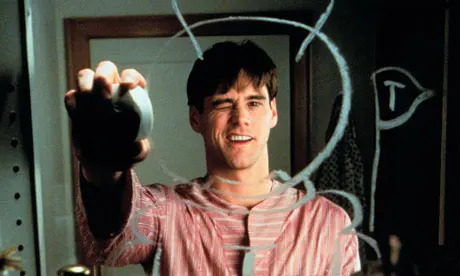
The Truman Show, starring Mrigashira Moon, Jim Carrey is another example of a Mrig native realising everything is a lie.
i think its a common and unfortunate pattern in the lives of many Mrig natives to suffer abuse and I feel like the reason many of them do is because they falsely believe the lies they are being fed is true :(( it takes them time to "wake up" to the truth (ex: Mrig Sun Brooke Shields who always defended her abusive mom who made her pose nude for playboy when she was a kid??? among other things, its only recently that she has started to admit that those things werent okay)
thats it for this post!!
#vedic astro notes#sidereal astrology#astrology observations#astrology notes#nakshatras#vedic astrology#astro observations#astro notes#astrology#astroblr#mrigashira#mars
93 notes
·
View notes
Text
JJK Chapter 260 Spoilers!
➠ Sukuna’s vision and the Hallucinations that arise from the deterioration of body in Buddhism:
This is a personal opinion on why Sukuna saw Gojo in that particular moment of Chapter 260. It is based on the process of Death in Buddhism and the visions that one entering the process of dying experiences. Please note that the death process varies depending on the school of Buddhism and here I am referencing the Mahayana tradition and the works of a Tibetan monk - Thubten Yeshe.
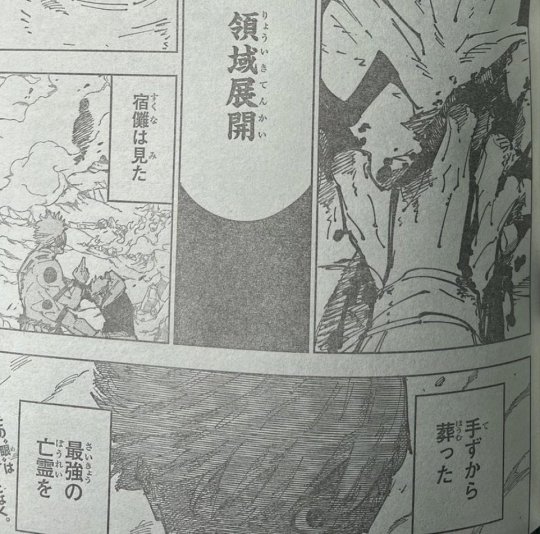
According to the work of Thubten Yeshe, the most important chakra (energy wheel) that runs through a body is the one located at the level of our heart as the heart chakra is considered the home of our very subtle mind (the mind is divided into the gross mind, the subtle mind, and the very subtle mind: the gross mind depends on the body and the five elements - earth, water, fire, air, and space. As soon as body functions stop, the gross mind stops. The subtle mind underpins the five senses - see, smell, hear, taste and feel the world of the spirit. The very subtle mind is the source of the clear light).
The activity of all types of mind, both gross and subtle, depends upon their supporting winds (of the energy) and where these are travelling. As long as they flow through any of the channels other than the central channel, these winds activate the gross minds that give rise to superstition and confusion. But when these winds enter, abide and dissolve into the central channel, as happens naturally at the time of death, the gross minds subside and the very subtle mind of clear light arises instead. This entire process happens automatically during death (as a process of deterioration) but very few are able to recognise it.
Here it is also important to note that the root of the Samsaric (endless cycle of life, death and rebirth) suffering is ego-grasping: the wrong view that holds onto a mistaken belief in a self-existent ‘I’ or ego-identity. Holding onto one’s ‘ego-identity’ at the time of the passing brings death in an uncontrolled manner, which forces the dying to enter an uncontrolled intermediate state.
Now to the actual process of dying: there are three stages - death, the intermediate state and rebirth. For us the process of death is important, so I will be discussing only this stage.
Death is the separation of the mind from the body. The body does not lose its ability to maintain consciousness all at once, but does so gradually with each element of the body losing its supportive ability in turn. First, the earth element sinks, or dissolves, into the water element and then the water element sinks into the fire and fire into the air, and the air element into consciousness itself. For example, when it is said that the earth element sinks into the water element, this means that as the solid portions of the body are losing their ability to function and are becoming less intimately interconnected with the dying person’s mind, the liquid element appears stronger and more evident. As these various physical elements become stronger and weaker in turn, the dying person experiences certain external and internal signs associated with the dissolution process.
When people, who have not trained themselves to go through the process of death during life, die they are out of control. They become overwhelmed as their bodily elements go out of balance and cease functioning harmoniously. It is therefore very difficult, if not impossible, for them to remain calmly aware of what is happening while experiencing visions. To put it simply, while desperately holding onto a supposedly solid sense of ‘I’ for security, they panic as the basis for one’s ego-identity – the body itself – begins to disintegrate.
As the earth element of their body deteriorates and the water element grows stronger, their mind is filled with the hallucination of a shimmering silver-blue mirage. They feel trapped and suffocated. Then the water element sinks into the fire element and a vision of swirling smoke appears. As this is happening they may feel that they are drowning or being carried away by swirling currents of water. Next, the fire element dissolves and their body gradually grows colder; they perceive a vision like that of sparks dancing over an open fire at night. Finally, the air element dissolves and their breathing becomes very shallow, and they may feel that they are being blown about like a leaf in the wind. Along with this experience comes the vision of a dying flame in a darkened room. As is the case when a candle is about to go out, the flame suddenly grows brighter as if exploding in a final burst of energy. Their breathing, which has been getting more and more difficult, now comes to a complete halt. To the outside world, they now seem to be dead. The visions one experiences in the process of death also vary from school to school (some see people, some see ‘demons’ or their fears, etc.).
I think that what we saw at the end of Chapter 260 was Yuuji causing damage so big to Sukuna’s heart chakra (in this particular case of jjk, soul) that he caused the elements of Sukuna’s body to deteriorate and enter different stages. We are seeing Sukuna being pushed to the edge of dying and his vision of ‘the ghost of the strongest’ is the representation of the visions (hallucinations) that arise from the uncontrolled mind at the moment of the beginning of the death process and the dissolution of the body. He is desperate (or trapped in a place/position he has never truly envisioned himself to be in) and clinging to the version of himself when his ego-identity was at its highest (i.e. defeating the strongest of the modern era). And how he sees Gojo, arising from the smoke (dust) is similar to how the hallucinations arise between the deterioration of the elements as well.
#i promise it makes sense when you read it to the endㅋㅎ#ha. my brain won't brain properly after the hours long public defense but i tried.#and i better be rightㅋㅎ#akutami gege please do not take that road. this road here is what you must embark on.#ha. i need to shut up.#sukuna#jjk sukuna#jjk#jjk spoilers#jujutsu kaisen#ryomen sukuna#gojo satoru#itadori yuuji
48 notes
·
View notes
Text
Cultural Fashion: Tsemo

Tsemo is a character from the Avatar Legends: The Roleplaying Game Core Book. She is a post-Harmonic Convergence airbender. Her outfit is inspired by the traditional women’s clothing of Bhutan.
Traditional Bhutanese skirts are called kira (དཀྱི་ར) and are characterized by their elaborate designs of diamond shapes and horizontal lines, which Tsemo’s skirt shares. However, the silhouette of Tsemo’s skirt is A-line rather than rectangular. This modification was likely for ease of movement and to add to her overall airbender aesthetic.
Traditional Bhutanese tops are made up of two layers. The first layer is a blouse called a wonju (འོན་འཇུ་), while the second layer is a short jacket called a toego (སྟོད་གོ་). The sleeves of the wonju are folded over the sleeves of the toego to create prominent cuffs. You can also see the collar of the wonju peeking out of the toego as well. Tsemo’s top has both these details, with her blouse being dark brown and her jacket being saffron. Finally, the anklets she wears resemble traditional Bhutanese bangles called dhopchuu (གདོབ་ཅུ).
Overall, Tsemo’s character design might be one of my favorites in the whole franchise. It’s eye-catching yet practical, and the cultural inspiration is spot-on. Bhutan is a mountainous Himalayan nation that practices Tibetan Buddhism, so it’s the perfect source to draw from for an Air Nomad character. Bhutanese architecture is also the basis for the Western Air Temple.
I also have to admit that--- for all the issues I have with the Avatar TTRPG--- the art is fantastic. The style is like the perfect halfway point between the rounded ATLA look and the angular Korra look.
Like what I’m doing? Tips always appreciated, never expected. ^_^
https://ko-fi.com/atlaculture
#avatar#atla#Avatar The Last Airbender#Air Nomads#I wish they leaned more into the Himalayan aspect of the Air Nomads in Korra#instead of making them all wear weird flying squirrel superhero suits#avatar legends
391 notes
·
View notes
Text
Pain, Trust, and Separation in Some Asian Dramas (The Second Post In a Series of Utterly Un-scholastic, Highly Personal Big Meta)......
AKA, Turtles Catches Up With Old GMMTV: The Bad Buddy Rewatch Edition, Part 2 -- How Themes of Pain, Trust, and Separation Create Structure and Narrative in Bad Buddy and Other Asian BLs
[The following is a preamble I use for my Old GMMTV Challenge posts, here we go! What’s going on here? After joining Tumblr and discovering Thai BLs through KinnPorsche in 2022, I began watching GMMTV’s new offerings -- and realized that I had a lot of history to catch up on, to appreciate the more recent works that I was delving into. From tropes to BL frameworks, what we’re watching now hails from somewhere, and I’m learning about Thai BL's history through what I’m calling the Old GMMTV Challenge (OGMMTVC). Starting with recommendations from @absolutebl on their post regarding how GMMTV is correcting for its mistakes with its shows today, I’ve made an expansive list to get me through a condensed history of essential/classic/significant Thai BLs produced by GMMTV and many other BL studios. My watchlist, pasted below, lists what I’ve watched and what’s upcoming, along with the reviews I’ve written so far.Today, I offer the second of four posts on Bad Buddy, and the second in a Big Meta series on pain in some Asian dramas, including QLs and/or het romances. I'll look today at how ideas of pain in love, trust in love, and separation of partners/family members creates narrative drive in Bad Buddy and other Asian BLs. THIS IS A LONG POST, caveat emptor.]
Links to the BBS OGMMTVC Meta Series are here: part 1, part 2, part 3a, part 3b, and part 4
Well, after a lot of titles and a chewy preamble (thank you for getting through that, y'all!), I'm here to say that I'm combining my two ongoing meta series into one big ol' post here that I've been dying to write for months. In the course of my watching the shows on the Thailand-based Old GMMTV Challenge watchlist, as well as watching shows from my BL gateway of Japan, I've noticed that the themes of pain and trust in love, along with voluntary or involuntary separation, have been used to create dramatic and narrative structure within Asian dramatic stories to many emotional effects.
I'm celebrating the incredible Thai BL drama that is Bad Buddy in my OGMMTVC series at the moment, and within my Big Meta series on pain in Asian dramas, I examine how themes of pain so very often harken back to artistic, and even traditional, viewpoints of how pain, suffering, and melancholy are natural cultural assumptions within many collectivist Asian societies. In my first Big Meta on pain and suffering in Asian dramas, I wrote that "accepting pain and suffering is a part of the life we decide to live, from an Asian cultural perspective." Suffering is a naturally assumed part of life, a very distinct and identified part of a Buddhist's lived life, and even outside of Buddhism, accepting and living with difficulties of all kinds -- wealth disparities, the struggle for a good education and/or a successful career, the struggle to conform to collectivist familial and/or social expectations, etc. -- are extremely common themes that are unwound on in Asian lives on a minute-to-minute basis. The idea that an Asian must live with pain is often a root of intergenerational trauma, passed along from generation to generation of Asian children-to-adults. The social mores by which Asians are raised and live, to assume what Westerners might call a lack of unconditional parental love and affection, are certainly in part rooted in an assumption that living with pain and without the, say, luxury of turning over one's emotions at any given moment, are an automatic given.
As I've plodded through the OGMMTVC watchlist, I noticed very often that separation of people -- whether those people are lovers, children/parents, or simply just adults within a group -- is often a major narrative turning point in the course of a dramatized relationship. Of course it would be; it's a common trope within the romance genre, for instance.
But I find the separation of people otherwise connected to each other -- and the assumed pain of that separation, and the trust that people may have to return to each other -- particularly fascinating within the realm of Asian dramas, for reasons relating to the assumption of pain and suffering in one's life within Asian cultures that I mentioned above. In other words, the pain of separation, and the trust that one might have that one person will come back to another person -- are givens within the scope of Asian life.
In the following dramas, I note that separation is either a central storytelling point, or is a central focus of side characters:
1) The Thai filmmaker, Aof Noppharnach, has explored separation of people/lovers in many of his shows, including Still 2gether, A Tale of Thousand Stars (in multiple forms), and in Bad Buddy (also in multiple forms, romantic and/or familial).
2) Also from Thailand, Until We Meet Again and I Promised You The Moon are two non-GMMTV dramas in which separation of lovers plays an important concluding narrative role.
3) From Japan, the movie version of Cherry Magic: 30 Years of Virginity Can Make You a Wizard?! captures an important central narrative of separation that leads the franchise's two protagonists, Adachi and Kurosawa, to explore depth in honesty and intimacy that they may not have otherwise achieved in their everyday lives.
The painful separation that occurs in Aof Noppharnach's shows is most often related to the outside forces of life as it needs to be lived -- very often economically -- within or external to Thailand. In Bad Buddy, Pran leaves for Singapore for two years. I'm going to unwind much more on Pran leaving for Singapore in the final installment of my Bad Buddy OGMMTVC meta series, particularly by way of how he can do it, emotionally. But I want to offer a quick note about Pran's departure that the show gives a hint to (despite the pain that we feel in our hearts for Pat's loneliness from Pran, as depicted so beautifully by Ohm Pawat and his silent and longing existence as Pat in the first half of the Bad Buddy series finale). The BBS finale has Pran stating that he'll only be away for two years, and that the pay and the opportunity for an excellent architecture job were better in Singapore. In conversation with the fabulous Thai blogger, @recentadultburnout, RAB mentioned that this is a common occurrence among young Thais -- to move overseas for better job opportunities.
In spite of my heart breaking a bit for Pran being away from Pat when I first learned about his leaving for Singapore -- when RAB put Pran's departure in that context, I had to slap my cheek a bit. Because! I'm a child of Asian immigrants. Separation from family for better economic opportunities is a HUGE part of our paradigm of life between continents. As my Asia-based uncle, my mother's brother, once put it, in regards to my mother: "one of the children in our families always had to move away." For my mother's family, it was my mom who shipped off. Besides individuals seeking better economic opportunities for themselves, the economies of many Asian countries are dependent on the reception of remittances from overseas family members sending money back to their home countries, as my mom did for years; the Philippines is particularly notable for having a nearly 9% contribution from overseas remittances to its gross domestic product. In other words? The separation of loved ones is literally built into the financial frameworks of many Asian nations.
The separation of children or partners to overseas locales for the sake of better salaries and/or opportunities is simply a more assumed part of the cultural paradigm, I'd argue, in Asia than in the West. Family separations for jobs are extremely common in Asia; in the West, I'm not sure they are as assumed, especially for extensive separations, as the value placed on keeping a family unit together for cultural or spiritual reasons seems to be more a part of the Western fabric of life (despite our high rate of divorce).
We see an even more permanent economic separation happen in Still 2gether between two side characters -- Type, played by Toptap Jirakit, who is Tine's (Win Metawin) brother, and Man (Mike Chinnarat), who is Sarawat's (Bright Vachiwarit) friend. Man chased after Type during the first 2gether season; in Still 2gether, they're navigating their committed relationship, as Type contemplates, then accepts, a permanent job offer in Phuket, hours away from their home base in Bangkok.
As @lurkingshan put it, I might be the only person on the planet contemplating Type's and Man's relationship (lmao, it do be true), but I found Type's last conversation with Man, on the beach, to be particularly direct and moving for someone who has no immediate plans to move back to the side of the person he's dating.

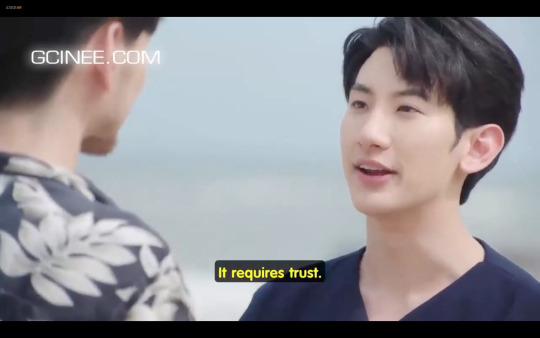

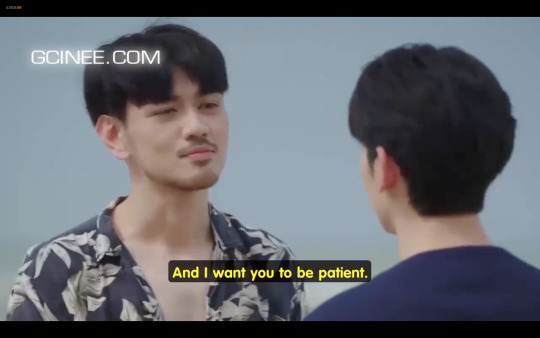

I think about this scene against the structure of the short series that is Still 2gether, which is centered around the protagonists of Sarawat and Tine being temporarily separated as they prepare to compete in a university-wide tournament. Sarawat has the most lovely contemplation on love during this separation, and even Aof Noppharnach himself admits that the glance that Sarawat and Tine give to each other as they pass each other in the lead-up to the ultimate tournament is his favorite scene he's ever filmed (!!!) (and that scene is sooooo reminiscent of Pran's and Pat's pinky-hold after their public "break-up").
In other words: Still 2gether is ALL about separation, and contemplating the strength of love relationships in the face of those separations. While Sarawat and Tine will get back together, after that tournament -- Type and Man are separated for the foreseeable future. There is no end indicated to the patience that Type wants from Man. The conversation is just, THERE, and hanging -- there's an acknowledgment that long-distance relationships are tough, but Type isn't offering to quit his job and move back to Bangkok. Instead, Type and Man are left to accept the reality that there is no end in sight to their separation.
And I think this was incredibly bold of Aof Noppharnach to include in a GMMTV BL that otherwise ended happily for Tine and Sarawat, the main protagonists. What I admire about Aof's works are these sly inclusions of open-ended, sometimes melancholy non-resolutions, either for his main or his support characters, that leave us as viewers often slightly unsatisfied or unfulfilled. He did this in particular with the character of Aof in Gay OK Bangkok, a web series that he screenwrote in 2016; and many might say that Pran being away in Singapore is also not the most satisfying of endings for our beloved PatPran in Bad Buddy. To me, these decisions to do this artistically are just incredibly reminiscent, again, of the kind of pain that we as Asians have been culturally attuned to accept, for the sake of economics, and/or for the sake of the betterment of our loved ones.
Besides economic separations in Aof Noppharnach's works, we also have separations related to family demands and desires. In A Tale of Thousand Stars and Our Skyy 2 x A Tale of Thousand Stars, we see Tian leaving Phupha's side for two years to study for a graduate degree at Tian's mom's insistence; and we see Phupha refusing to join Tian, after Tian has graduated and moved back to Pha Pun Dao, on trips Tian takes back to Bangkok to celebrate his birthday with his parents.
When I rewatched ATOTS earlier this year, I noted that both Phupha and Tian were remarkably bad communicators throughout the original series -- and I posited that, in large part, their terrible communication was borne out by way of the both of them being raised in traditionally masculine Asian households that seemed to not allow for leeway regarding emotional revelations. BOTH Phupha and Tian were expected and intended to follow in the footsteps and demands of their family members. To the end of the ATOTS storyline in Our Skyy 2, Phupha brings up his parents -- and he hears what he has been wanting to confirm from Tian's parents, in their desire to have Phupha take care of Tian for the rest of their lives.



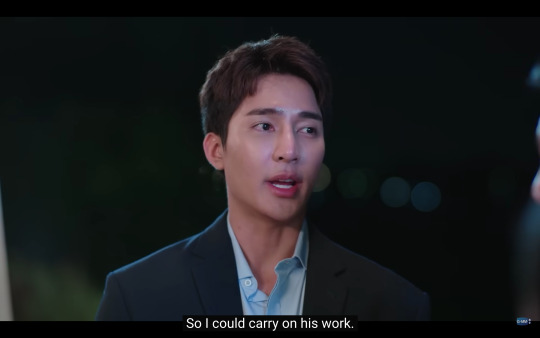

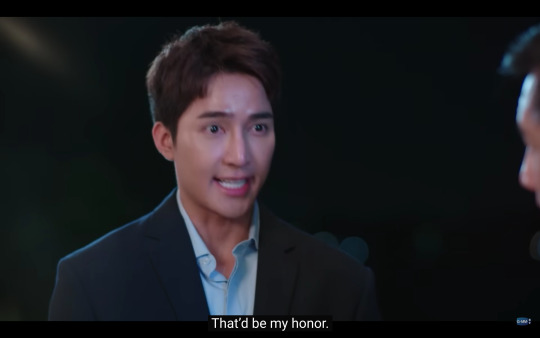
Phupha in particular needed to have multiple gateways opened to him, vis à vis Tian's family, in order to properly and openly confirm his permanent love and commitment to Tian. If Phupha didn't have that? He was willing to be separated from Tian, either temporarily, or at length. Phupha needed a kind of culturally accepting door opened to him -- as a man raised in what we assume to be a rural and traditional environment that may very well have not allowed for a gay man to live openly and honestly. Phupha indeed follows in his father's footsteps, to the extent of never leaving Pha Pun Dao, and demanded that he have Tian's family's approval before making the final commitment to Tian to love Tian forever.
I find the cultural nuances of nuclear family separation, or separation encouraged by nuclear family, to be particularly heartbreaking in many of Aof Noppharnach's works. We know that Jim and Jam, brother and sister in Moonlight Chicken, ran away from their Isan hometown as youths to find their lives in Pattaya, where we meet them in the context of that show. But separation either from nuclear family, or more impactfully, done by nuclear family, is most evident in Bad Buddy.
Besides Pran voluntarily leaving for Singapore, we know that Pran has been involuntarily separated from Pat before -- when Pran was transferred to a boarding school in 10th grade by his mother, Dissaya. Before that transfer, Pran and Pat were technically "separated" by their parents in so far as they were not supposed to become friends -- all while competing heavily against each other in every category of life.
That boarding school transfer? That wasn't just separating Pran from Pat. What I found remarkable about that separation during my recent BBS rewatches is that Dissaya HERSELF chose to be physically separated from her own son, for the sake of her rivalry with Pat's father, Ming.
I'm thinking about this particularly from the words she used with Pran as they sat at breakfast together before Pran started his second year at university, when Dissaya said that Pran could date anyone, men or women, as long as he "didn't date [the next door kid]."
My interpretation of that perspective is that Dissaya did not want Pran to relieve the heartbreak that she herself experienced when she was close with Ming in her teenage years.
In other words: she chose to send her son away in the face of her ongoing, lifelong fear that Ming and his family would once again wreak havoc on her and her clan.
In the continuation of the intergenerational trauma wrought upon Pat and Pran by their parents -- as a mother myself, this seems to be particularly egregious. Dissaya would have rather had her son AWAY FROM HER, than to contemplate her son even being WITHIN physical proximity to Pat in the context of her hatred of Pat's father, Ming, and the fear that she had that the Jindapats would negatively influence the Siridechawats again.
(The wonderful @telomeke reminded me, in conversation on this topic, that the first question Dissaya asks Pran, after learning about the first faculty fight in episode 1 when Pran re-encounters Pat for the very first time, was, "Did he hurt you, Pran?" Dissaya cannot bear to allow the Jindapats to hurt her son, or her family, ever again.)
I wrote in my first Big Meta on pain and suffering that Asian parenting expectations and mores are far more conditional than they are in the West, as parenting mores in the West are centered around unquestioned and unconditional love from parents to children. So much of Bad Buddy meta out there focuses on the internal experiences of Pran and Pat. When I sat back to think about Dissaya making the decision for herself to be separated from her son for years -- and then to also contemplate pulling Pran FROM COLLEGE when she learns that Pat goes to Pran's university -- I mean. We know Dissaya and Ming both tried their best to embody their hatred of each other into their children. But Dissaya takes it a couple steps further, by attempting to literally control Pran's physical existence vis à vis Pat, which -- and I'm going to sound like a judgmental Westerner here, even as an Asian -- strikes me as out of line by way of just pure emotional projection onto one's children.
When Pran goes to Singapore, at the end of the series, it's out of his own volition. Again, I'll write more about this at the end of my BBS OGMMTVC meta series. But what he experienced by ways of many TYPES of separation from Pat throughout his life -- competitively, emotionally, and then physically -- are extensive. He was physically separated from Pat by Dissaya. He was theoretically "separated" from Pat emotionally, by being discouraged in having a friendship with Pat. He is physically separated from Pat *again* when he goes to Singapore. And I posit later in this piece that Pat and Pran had another theoretical "separation" when they are pretending to be broken up throughout the course of their relationship.
When I think about what teenage Pran must have felt to be *physically sent away* -- BY and FROM his own family, for their sake of his family's desires to avoid ANOTHER family -- it explains a hell of a lot more about Pran's tendency to dissociate, particularly during stressful times. (We see this when he's alone at the demolished bus stop, and cutely in Our Skyy 2, as Pat encourages a grumpy Pran to go to Pha Pun Dao.)
And where Pat balanced Pran out -- where Pat could offer the kind of companionship, and relaxed and equitable communication that Pran had never had with his family -- was where Pran could finally experience truly open and SAFE love from and with another person, another person who wouldn't *send him away* if Pran didn't play by their rules. Instead, Pat fought by Pran's side, and Pran was willing to fight, too, and they remained together, and safe in their love and trust.
Whew. Dissaya separating Pran from his own family, from herself -- to leave him alone at boarding school -- seriously punches me in the gut, especially as a mother myself. I'm thinking about a teenager, on the cusp of adulthood, alone to contemplate his unending love for Pat, and I'm like.... I wouldn't leave a kid alone like that for a moment. But for Dissaya, her husband, and their pride? It seemed to be a worthwhile decision in that moment. A decision that we know would blow up in their faces in episode 10 of Bad Buddy.
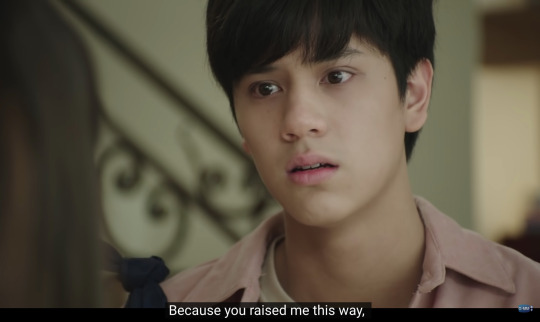

In Pran's first separation from Pat -- Pran did not have personal agency. He did have agency later on, as he moved to Singapore, which again, I'll contemplate in a further meta.
Two instances where I was impressed by protagonists leveraging their agency vis à vis temporary separations from their partners was in Until We Meet Again and in I Promised You The Moon.
UWMA's Pharm was first and foremost presented as a blushing maiden. HOWEVER: Pharm demonstrated quite a bit of sexual agency early in the series. He was forward in his crush on Dean. He contemplated openly being gay. And he wasn't afraid to push Dean away when Dean was moving too fast sexually.
At the end of the series, after Dean and Pharm have resolved their spiritual connection vis à vis the embodied spirits of Korn and Intouch meeting once more -- Pharm wants to know if the love between him and Dean is real, and independent of the influence of the spirits of Korn and Intouch. So: Pharm asks for a break.
Throughout UWMA, Dean is the obvious seme, and Pharm is the blushing uke. I squealed in DELIGHT when I first watched Pharm asking for the break. Yes, Pharm loved Dean -- and what I saw in Pharm's asking for a temporary separation was truly out of that love, to confirm between the both of them that their relationship was very much indeed a forever relationship. God, I get chills thinking about it: Pharm was safe enough in his sphere with Dean to ask for and to GET the agency-driven space that HE NEEDED to feel fully confident in the relationship. That was a risky move that paid off for the two guys in dividends in the end. Dean had no choice but to say yes there.
The fabulous Oh-aew in I Promised You The Moon goes even further than Pharm. He fucking breaks up with Teh! After Teh cheated on Oh-aew! YES, HOMEY, YES! No wibbling on Oh-aew's end. Oh-aew was devastated, yes. But he knew he had to have Teh out of his life in that moment, for the sake of Oh-aew's own happiness, growth, and development. He even rejects Teh's reach-out at the end of their college careers.
What stuck me as so golden about the ending of IPYTM was that that break-up wasn't actually presented as temporary. They were apart for OVER A YEAR (thank you kindly to @shortpplfedup for the temporal fact-check!). Oh-aew held his ground. He needed his time and space. He needed to grow! And he valued that, individually.
I'm celebrating these two instances of agency-driven separations because of the style of their intention vis à vis the protagonists asking for, needing, and leveraging these separations. With the economic and involuntary separations I talked about earlier -- it's like there was a higher need, whether it was for money, a better career opportunity, fear, or selfishness on the part of a family to create the separation.
With Pharm and Oh-aew: the separations they demanded were purely personal and for their own growth. We know now that Pharm and Oh-aew get their endings with their partners. Pharm has a purely happy ending with Dean in Between Us. Oh-aew's ending with Teh is open-ended -- we don't know what chaos Teh will wreak next -- but at least we know they're navigating that chaos together again.
The last drama I wanted to take a look at regarding pain, trust, and separation is the fabulous movie continuation of Cherry Magic: 30 Years of Virginity Will Make You a Wizard?! (I always love writing ?! whenever I talk about Cherry Magic, lol).
The central separation in the movie of the two protagonists, Adachi and Kurosawa, comes about when Adachi is transferred to Nagasaki for work. As @neuroticbookworm and @lurkingshan can attest to: a Western viewer of Japanese BLs will often find themselves screaming to a screen, "JUST TALK ALREADY!," and a uniquely common aspect of Japanese doramas is that so much of communication in Japanese culture is silent, unsaid, kept internal by collectivist social pressures to not make waves with another person -- which automatically creates ongoing questions of trust between partners. When Adachi (Akaso Eiji) shares with Kurosawa (Machida Keita) that Adachi will be moving, Kurosawa shares in words that he's happy for Adachi, but through very simple body language, communicates that he is feeling otherwise.
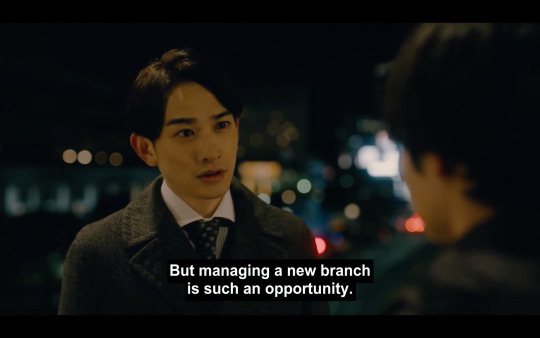
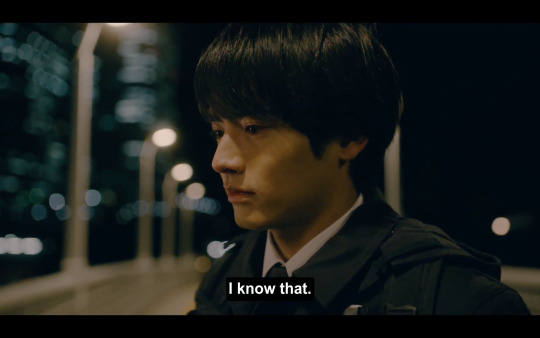

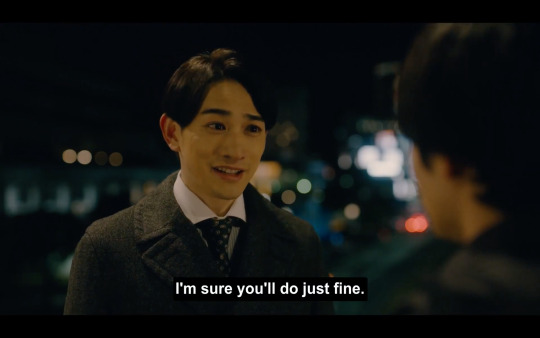
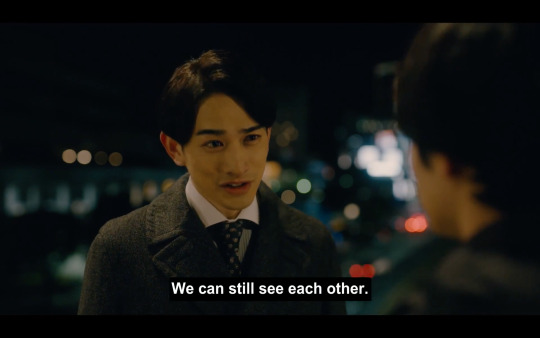


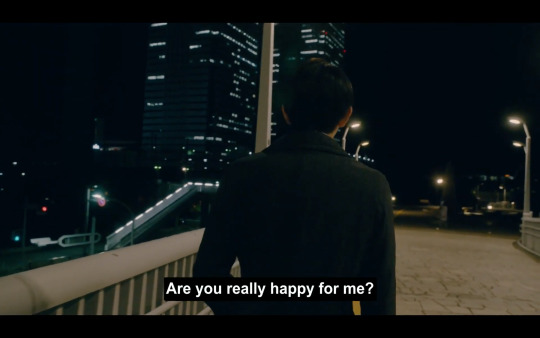
Later in the movie, Adachi gets into an accident in Nagasaki, and Kurosawa rushes to be by Adachi's side. Kurosawa is clearly traumatized. And Kurosawa finally reveals his feelings about the entire situation -- a rare display of direct emotional confession.



We think that Adachi moved to Nagasaki for this job opportunity -- separating himself from the incredibly devoted and head-over-heels-in-love-with-Adachi Kurosawa. Adachi knows well enough that Kurosawa is suffering in this separation. But later in the movie, after Adachi has moved back with Kurosawa, do we learn Adachi's true intentions. Adachi wants to make himself invaluable at work -- so that Adachi's and Kurosawa's shared company will not separate them if the company finds out about their relationship.


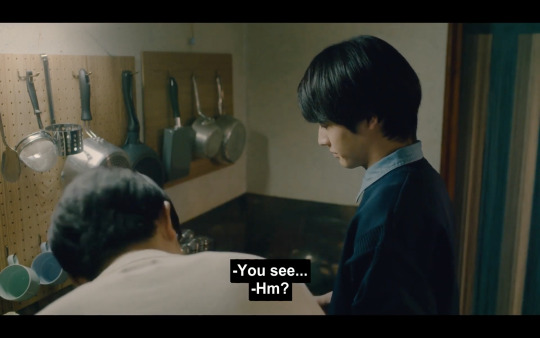


This particular conversation between Adachi and Kurosawa -- after their separation, after they've moved in together -- is a huge turning point in the movie for Adachi, who had usually been the reluctant uke in their relationship prior to this moment. In this conversation, Adachi expresses his fear that outside forces will eventually separate them, and he wants to do what he can to ensure the safety of their relationship.
To me, this is incredibly reminiscent of the compromises Pran and Pat make in Bad Buddy to keep their relationship secret -- another theoretical "separation" -- from their parents for the health, safety, and viability of their relationship.
As well, this conversation between Adachi and Kurosawa moves forward into Adachi's desire to come out to their families. He was inspired by the immediate aftermath of the accident, in which Kurosawa was the last person to find out that Adachi had gotten hurt -- only after Adachi's family and company were notified.
The nuances of this separation between Adachi and Kurosawa -- and what the separation LED TO, which was an eventual and permanent commitment between Adachi and Kurosawa -- are incredibly layered. Adachi made an economic separation from Kurosawa. But it was also rooted in his desire to acclimate his company to his company's dependence on Adachi, so that the company would choose Adachi's contribution to the company over the potentially taboo reality of his same-sex relationship with a colleague in Kurosawa. In other words: he wanted to leverage the separation and his work performance upon his return, to render the company no choice in choosing Adachi's economic performance over his personal and private choices.
(One insight into Japanese culture is that for decades, Japanese corporations have wanted their employees to be married, to complete a seamless connection between household and "office" families. The Japanese BL Kinou Nani Tabeta?/What Did You Eat Yesterday? makes reference to the fact that the main protagonist, Shiro, becomes an independent lawyer because, as a gay man, he may have been pressured to take a wife in another, more group-oriented corporate setting.)
AND, following this, Adachi wanted to come out to his and Kurosawa's families, to also acclimate them to their relationship, so that their families would also not threaten the sanctity and safety of their relationship. And his gamble worked -- and their families accepted them, and they were able to make a permanent commitment to each other.
Without a strategically economic separation, Adachi and Kurosawa could not have achieved key moments of communication that led to their ability to find safety in their external environments, and make a personal and private permanent commitment to each other. The separation to Nagasaki was Adachi's lever to move their relationship forward.
It's so nuanced, so layered, and so strategic on Adachi's end, to use the work separation and his commitment to his company as such a motivator to propel his relationship forward and permanently with Kurosawa -- especially vis à vis the unique nuances of spoken and unspoken communication in Japanese society, which are remarkably different than the styles of communication we see in Thai dramas.
In Pran's and Pat's conclusion in the Thailand of Bad Buddy, they go in the opposite direction: for the sanctity and safety of their relationship, they act out a break-up scenario (with Dissaya telling Pran, "come back to your family," ha), and keep their committed relationship a secret. And this happens *two years* before the context of an actual, physical separation when Pran decides to move to Singapore after graduation.
It's a bit of a switcheroo from what we'd expect by way of open vs. closed communication between Japan and Thailand. But both scenarios, from Cherry Magic to Bad Buddy, work brilliantly well to ensure that all relationships are safe and solidified.
I'm not sure that I can say, globally, that separation from one's nuclear family, or separation from a partner, are common occurrences in manifested everyday reality. As I mentioned before, the economies of many countries are dependent on the physical separation of their citizens to other locales to send back monetary remittances. But more often than not -- when partners are partnered, they tend to want to stay by each other's sides.
I love that many Asian dramas do not shy away from the many realities as to why partners or children may be voluntarily or involuntarily separated from loved ones. Our beloved dramas show us the devastation of involuntary separations, as rendered by Dissaya unto Pran. We see that economic separations can actually LEAD to a solidifying of relationships in the case of Adachi and Kurosawa. We see that family-motivated separations, in the cause of Phupha and Tian, simply needed the investment of time for their relationship to reach a point of comfortable commitment. We see that agency-driven separations by Pharm and Oh-aew can lead to emotional clarity. And, we see that theoretical, secret-kept "separations," of the kind that Pat and Pran created for themselves, to protect their relationship, were risks worth taking, simply for them to be together and happy.
Pain and happiness are not emotions independent of each other. At least in the eyes of my Asian cultures, human beings embody all emotions, all the time. Humans are certainly primed, internally and socially, to seek happiness and balance. But as I've posited here in this post -- is there pleasure without pain? The pain of separation, the trust that partners and family members can learn from each other through separation, and the lessons and communicative ability to solidify relationships after the obstacles of separation, are all themes of life that, I think, are worth unwinding on, in glorious emotional detail. And I love that our beloved Asian dramas do not shy away from these examinations.
(Tagging @dribs-and-drabbles and @solitaryandwandering by request! If you'd like to be tagged, please let me know!)
[Well, this one was a doozy -- if you got through it all, I thank you! Next up, next week, is another post I've been dying to write for months. I had the opportunity to engage in lengthy conversation with a number of FABULOUS Asian Tumblr bloggers, all of us Bad Buddy stans, to reflect on our experiences as Asian reviewers watching BBS and to talk about what we related to. I have a list, a WHOLE LIST! of themes to expound on. I'm calling it Asian Cultural Touchpoints Within Bad Buddy. And I may need to split it into two posts, because there's a lot to talk about. Join me and my friends next week in our continued Bad Buddy brain-rot sesh!
Here is the status of the Old GMMTV Challenge watchlist. Tumblr's web editor loves to jack with this list; please head on over to this link for the very latest updates!
1) The Love of Siam (2007) (movie) (review here)
2) My Bromance (2014) (movie) (review here)
3) Love Sick and Love Sick 2 (2014 and 2015) (review here)
4) Gay OK Bangkok Season 1 (2016) (a non-BL queer series directed by Jojo Tichakorn and written by Aof Noppharnach) (review here)
5) Make It Right (2016) (review here)
6) SOTUS (2016-2017) (review here)
7) Gay OK Bangkok Season 2 (2017) (a non-BL queer series directed by Jojo Tichakorn and written by Aof Noppharnach) (review here)
8) Make It Right 2 (2017) (review here)
9) Together With Me (2017) (review here)
10) SOTUS S/Our Skyy x SOTUS (2017-2018) (review here)
11) Love By Chance (2018) (review here)
12) Kiss Me Again: PeteKao cuts (2018) (no review)
13) He’s Coming To Me (2019) (review here)
14) Dark Blue Kiss (2019) and Our Skyy x Kiss Me Again (2018) (review here)
15) TharnType (2019-2020) (review here)
16) Senior Secret Love: Puppy Honey (OffGun BL cuts) (2016 and 2017) (no review)
17) Theory of Love (2019) (review here)
18) 3 Will Be Free (2019) (a non-BL and an important harbinger of things to come in 2019 and beyond re: Jojo Tichakorn pushing queer content in non-BLs) (review here)
19) Dew the Movie (2019) (review here)
20) Until We Meet Again (2019-2020) (review here) (and notes on my UWMA rewatch here)
21) 2gether (2020) and Still 2gether (2020) (review here)
22) I Told Sunset About You (2020) (review here)
23) YYY (2020, out of chronological order) (review here)
24) Manner of Death (2020-2021) (not a true BL, but a MaxTul queer/gay romance set within a genre-based show that likely influenced Not Me and KinnPorsche) (review here)
25) A Tale of Thousand Stars (2021) (review here)
26) A Tale of Thousand Stars (2021) OGMMTVC Fastest Rewatch Known To Humankind For The Sake Of Rewatching Our Skyy 2 x BBS x ATOTS (re-review here)
27) Lovely Writer (2021) (review here)
28) Last Twilight in Phuket (2021) (the mini-special before IPYTM) (review here)
29) I Promised You the Moon (2021) (review here)
30) Not Me (2021-2022) (review here)
31) Bad Buddy (2021-2022) (thesis here)
32) 55:15 Never Too Late (2021-2022) (not a BL, but a GMMTV drama that features a macro BL storyline about shipper culture and the BL industry) (review here)
33) Bad Buddy (2021-2022) and Our Skyy 2 x BBS x ATOTS (2023) OGMMTVC Rewatch (The BBS OGMMTVC Meta Series is ongoing: preamble here, part 1 here, and more reviews to come)
34) Secret Crush On You (2022) [watching for Cheewin’s trajectory of studying queer joy from Make It Right (high school), to SCOY (college), to Bed Friend (working adults)] (watching)
35) KinnPorsche (2022) (tag here)
36) KinnPorsche (2022) OGMMTVC Fastest Rewatch Known To Humankind For the Sake of Re-Analyzing the KP Cultural Zeitgeist
37) The Eclipse (2022) (tag here)
38) The Eclipse OGMMTVC Rewatch For the Sake of Re-Analyzing an Politics-Focused Show After Not Me
39) GAP (2022-2023) (Thailand’s first GL)
40) My School President (2022-2023) and Our Skyy 2 x My School President (2023)
41) Moonlight Chicken (2023) (tag here)
42) Bed Friend (2023) (tag here)
43) Be My Favorite (2023) (tag here)
44) Wedding Plan (2023)
45) Only Friends (2023) (tag here)]
#bad buddy#bad buddy the series#bad buddy meta#bad buddy the series meta#backaof noppharnach#aof noppharnach#nanon korapat#ohm pawat#ohmnanon#patpran#pran x pat#pat x pran#still 2gether#a tale of thousand stars#atots#our skyy 2 x bad buddy x a tale of thousand stars#cherry magic#cherry magic the movie#until we meet again#i promised you the moon#i told sunset about you#ipytm#itsay#moonlight chicken#the bbs ogmmtvc meta series#turtles catches up with the essential bls#turtles catches up with thai bls#turtles catches up with old gmmtv#the old gmmtv challenge#ogmmtvc
77 notes
·
View notes
Text

Kalachakra Mandala
Kalachakra is a sanskrit word that means “Time wheel”. It refers to one of the most complex philosophies and meditation practices within tantric Buddhism.
His Holiness the Dalai Lama from: 'The Kalachakra tantra, rite of initiation':
"The Kalachakra system was one of the last and most complex tantric systems to be brought to Tibet from India. In recent years many Westerners have become acquainted with this tradition as various lamas have given the Kalachakra Initiation to large groups of people. I myself have given it several times in Western countries, as well as in India and Tibet. Such initiation are given on the basis of a mandala, the sacred residence with its residence deities, usually depicted in graphic form . The tradition I follow employs a mandala constructed of colored sand which is carefully assembled prior to each initiation and dismantled once more at the end. Due to their colorful and intricate nature, mandalas have attracted a great deal of interest. Although some can be openly explained, most are related to tantric doctrines that are normally supposed to be kept secret. Consequently, many speculative and mistaken interpretations have circulated among people who viewed them simply as works of art or had no access to reliable explanations. Because the severe misunderstandings that can arise are more harmful than a partial lifting of secrecy, I have encouraged a greater openness in the display and accurate description of mandalas."
The best known form of the Kalachakra mandala is the sand mandala, for which colored sand grains are painstakingly placed. This sand drawing represents a 3-dimensional palace of which every single detail has a symbolic meaning. A mandala is a symbolic representation of many aspects of a specific tantra. In the Kalachakra tantra, all elements of the mandala refer to the universe (outer Kalachakra), the body and mind (inner Kalachakra) and the practice (initiation, generation and completion stages).
Every detail of the mandala, from each deity to every adornments of the building, refers to time and the universe (Outer Kalachakra), physical and mental aspects of Kalachakra and ourselves (Inner Kalachakra), and also to aspects of the practice (Alternative Kalachakra).
It should be noted that in the Kalachakra tradition, an unusual order of directions is followed in the description of the mandala. As usual (in Tibetan artwork), the Eastern direction (black) is directed to the viewer, or at the bottom of an image, but when going around the mandala, a somewhat complicated order is followed: clockwise from East to Southwest, clockwise from North to Northeast, and finally clockwise from West to Northwest.
56 notes
·
View notes
Text
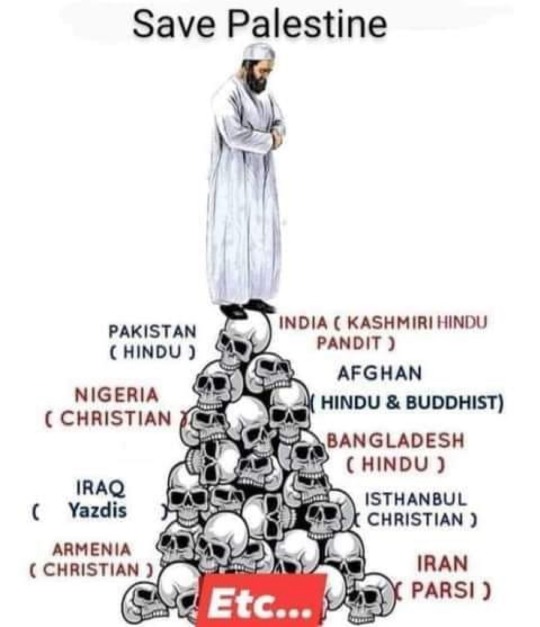
When most Westerners, especially the secular ones, think of religion they think of something they have seen in their own cultures and societies, i.e., Christianity, Judaism, Hinduism, and Buddhism.
And quite naturally, since most of them lack the insight and knowledge to understand Islam properly, they tend to lump it in with the other religions. That is a big mistake.
Islam can be properly described as a totalitarian way of life and a highly effective system of conquest, disguised as a religion.
Islam is totalitarian, not just in the sense of theocratic and dictatorial regimes, but also in the sense that there is virtually no part of a believer’s life that is not touched or influenced in some manner by it.
Virtually everything a Muslim does is influenced or guided by his faith, by Sharia law, or both.
In this sense, free will as Westerners and other non-Muslims understand it, is anathema to those inhabiting Dar al-Islam, the “House of Islam.”
Likewise, there is no real analog to the Western notion of liberty or freedom. The Arabic word most closely corresponding to “freedom” is typically said to be “hurriya,” but this is false for the term does not correspond to “liberty” or “freedom” in the sense that an American, for example, would understand it.
It instead means “freedom” to do as “Allah wills” for that individual.
Many traditional religious faiths and systems have laws or codes of law which attach to them.
What makes Sharia (Islamic) law unique, however, is that in theory, it applies not only to Muslims but to non-Muslims as well. At least that is what the Koran, the Hadith, and the Sira command.
Non-Muslims or kafirs, also known as infidels, ~ are denied the most basic of human rights under Islamic suzerainty.
They are most often akin to slaves, serfs, or supplicants, and even those non-Muslim dhimmis who serve a useful purpose to the sultan or caliph and survive on that basis, are still treated with inhuman brutality and can be beaten or slain at the whim of any Muslim male.
Most Westerners are familiar with the history of slavery, but how many know that Muslims have been the greatest slavers in history?
Which is to say, the most prolific takers, buyers, and sellers of slaves in history.
Even today, in many parts of the Islamic world, the Arabic word for slave, “Abd,” is synonymous with the slang or informal word for a black man.
Although the Muslims took many millions of black Africans as slaves, they likewise took many millions of Europeans and other peoples as slaves from temperate climates further north, venturing as far north as Ireland and Iceland on slave-taking raids.
As some of you may know, the very first war fought by the United States as an independent nation was the Barbary War of 1801-1805 (with a brief flare-up in 1815), fought against Islamic raiders and pirates off the coast of North Africa.
These nautical jihadists had been seizing American shipping and holding the passengers and cargo for ransom.
President Thomas Jefferson grew tired of their demands and sent the U.S. Navy and Marine Corps to Tripoli to teach them a lesson.
Various Islamic potentates, rulers, and warlords have infamously slain infidels by the multitudes down through the centuries.
According to the work of historians and political scientists who have studied such phenomena, the greatest or largest single genocide in human history was committed by the Islamic Mughal Empire in what is now the Indian sub-continent over years in the 15th century.
During that time, an estimated 270 million Hindus and other non-Muslims were put to the sword.
So many were slain that the streets ran with blood and giant pyramids of human skulls were erected by the soldiers of Allah.
Of course, many other empires and nations have committed acts of genocide, but such wanton bloodletting is impressive even by the standards of the worst tyrants of the 20th century, who had modern industrial warfare and weapons at their disposal but did not manage to even approach the totals of the Mughal Empire.
Historians consider the Armenian genocide (1915-1921) to be the first “modern” genocide since it was the first such atrocity that was recorded by still and motion-picture photography.
The Sunni Muslim Ottoman Empire in what is now modern-day Turkey was responsible for it and even today, under the government of Recep Erdogan, the president of Turkey, it is still a crime to speak or write of the extermination of the Armenians and Greeks, most of whom were Christians.
Anyone who has seen the haunting photos of young girls, Christian virgins, crucified by their captors and slowly dying in the hot sun in the desert, will never forget them.
These basic historical facts about Islam used to be widely known and taught across the West, but they have been politely airbrushed out of our history in recent decades, and now few people know of them …. or the danger presented by the soldiers of Allah.
25 notes
·
View notes
Text
Part 10 of "Letters from Watson" of The Sign of the Four starts with Sherlock Holmes enthusiastically infodumping.
He appeared to be in a state of nervous exaltation. I have never known him so brilliant. He spoke on a quick succession of subjects,—on miracle-plays, on medieval pottery, on Stradivarius violins, on the Buddhism of Ceylon, and on the war-ships of the future,—handling each as though he had made a special study of it. His bright humor marked the reaction from his black depression of the preceding days.
I wondered "why these topics in particular?"
Miracle plays were, in 1890, the subject of a new book by Alfred W. Pollard of the British Museum. It received a positive review in The Spectator.
The Arts & Crafts Exhibition Society had its first exhibition in London in 1888. While handicrafting, the William Morris aesthetic, and such, had been around for a while by then, this was the big organized push for public attention. Not only did the Arts & Crafts movement draw on medieval influences, but many a UK pottery maker was on the site of a medieval kiln and interested in medieval techniques.
Stradivarius violins are, of course, the sought-after antique violin. There were at least two donated to the Musée de la Musique in Paris shortly before the time of this story, as well as a number getting heard by important violinists in important orchestras. Even more interestingly from Holmes' point of view, a factory in Germany had just started making Stradivarius copies.
Buddhism in Sri Lanka had lapsed into torpor in the early 19th century but was, by 1890, well into a resurgence. The kick-off, back in 1866, had been Buddhist monk Mohottivatte Gunananda challenging Christian missionaries to a debate. In 1890, he had just died; but he had founded a political movement.
As for war-ships, in 1889, the Naval Defense Act had passed. It called for the UK Navy to be maintained at least twice as large as the combined navies of the next two largest powers (then France and Russia). War ships -- both quantity and design -- had doubtless been in the news for a while.
These aren't obscure hyperfixations (though I'm all for obscure hyperfixations!). These are conversational topics appropriate for a well-read gentleman of the era: the sort who gets three or four newspapers, reads the book reviews, and then reads the books reviewed. This explains how Dr. Watson and Athelney Jones set him off, or even participated in the conversation.
We also, while on a boat, get the return of Winwood Reade's Martyrdom of Man (making it Chekhov's book reference?). Says Holmes of Reade:
“He remarks that, while the individual man is an insoluble puzzle, in the aggregate he becomes a mathematical certainty. You can, for example, never foretell what any one man will do, but you can say with precision what an average number will be up to. Individuals vary, but percentages remain constant. So says the statistician."
Statistics was not new -- scholarly sorts had become engaged with statistics during the Enlightenment -- but it was in the early stages of being systematized into the mathematical field we know today. Holmes sounds like he would have been a fan of Francis Ysidro Edgeworth's Metre-like: Or the Method of Measuring Probability and Utility, published in 1887, since it attempted to use probability as the basis of inductive reasoning.
Then we have a boat chase.
I love the boat chase. I feel like the boat chase might have contributed to inspiration for the train chase in Nicholas Meyers' The Seven Percent Solution, though I also feel that a train chase needs no justification other than "we have two trains and a problem."

Our heroes leave from Westminster Wharf, which I'm assuming is roughly today's Westminster Pier, which had not yet received its statue of Boudica. (Westminster is conveniently southeast of Marylebone, where Baker Street is located.) So that long gentle curve is the river past St. Paul's and the Tower of London and under multiple bridges. They pick up the Aurora about where the river heads into that first shallow down-curve and chase it up and down, around the Isle of Dogs, up past Greenwich, and around the down curve at Blackwall. So they must catch it as the river starts to straighten and widen.
A pleasure tour from Westminster Pier to Greenwich today takes about an hour, but those are the boats their launch was passing like they were standing still. The Eva, a Thames Steam Launch of the appropriate era, was one of the speediest of the time and could achieve 16.5 miles/hour.
Then... I really would have preferred an actual monkey. We've now had in this chapter so many reminders of the achievements of European, particularly English, civilization that the avalanche of adjectives framing the Andaman Islander as primitive stands out as a deliberate counterpoint, despite the inclusion of Ceylon and Winwood Reade. Will we ever know what the Andaman Islander Accomplice's motivations were? (If yes, will I wish even more fervently that we'd just stuck with a monkey?)
I love the boat chase, though.
25 notes
·
View notes
Text
The still revolutionary insight of Buddhism is that life and death are in the mind, and nowhere else. Mind is revealed as the universal basis of experience—the creator of happiness and the creator of suffering, the creator of what we call life and what we call death.
There are many aspects to the mind, but two stand out. The first is the ordinary mind, called by the Tibetans sem. One master defines it: “That which possesses discriminating awareness, that which possesses a sense of duality—which grasps or rejects something external—that is mind. Fundamentally it is that which can associate with an ‘other’—with any ‘something,’ that is perceived as different from the perceiver.” Sem is the discursive, dualistic, thinking mind, which can only function in relation to a projected and falsely perceived external reference point.
So sem is the mind that thinks, plots, desires, manipulates, that flares up in anger, that creates and indulges in waves of negative emotions and thoughts, that has to go on and on asserting, validating, and confirming its “existence” by fragmenting, conceptualizing, and solidifying experience. The ordinary mind is the ceaselessly shifting and shiftless prey of external influences, habitual tendencies, and conditioning: The masters liken sem to a candle flame in an open doorway, vulnerable to all the winds of circumstance.
Seen from one angle, sem is flickering, unstable, grasping, and endlessly minding others’ business; its energy consumed by projecting outwards. I think of it sometimes as a Mexican jumping bean, or as a monkey hopping restlessly from branch to branch on a tree. Yet seen in another way, the ordinary mind has a false, dull stability, a smug and self-protective inertia, a stone-like calm of ingrained habits. Sem is as cunning as a crooked politician, skeptical, distrustful, expert at trickery and guile, “ingenious,” Jamyang Khyentse wrote, “in the games of deception.” It is within the experience of this chaotic, confused, undisciplined, and repetitive sem, this ordinary mind, that, again and again, we undergo change and death.
Then there is the very nature of mind, its innermost essence, which is absolutely and always untouched by change or death. At present it is hidden within our own mind, our sem, enveloped and obscured by the mental scurry of our thoughts and emotions. Just as clouds can be shifted by a strong gust of wind to reveal the shining sun and wide-open sky, so, under certain special circumstances, some inspiration may uncover for us glimpses of this nature of mind. These glimpses have many depths and degrees, but each of them will bring some light of understanding, meaning, and freedom. This is because the nature of mind is the very root itself of understanding. In Tibetan we call it Rigpa, a primordial, pure, pristine awareness that is at once intelligent, cognizant, radiant, and always awake. It could be said to be the knowledge of knowledge itself.
-- The Tibetan Book of Living and Dying
222 notes
·
View notes
Text
A Brief Note on Lotus Rebirth
Did you know that lotus rebirth is quite common within Buddhism, though Nezha’s case is the most well known? I’ve attached a digital rendering from the Yun’gang Caves, originally from around the fifth century.

This type of rebirth isn’t specific to any deity or bodhisattva. Rebirth into the Buddha Amitabha’s Pure Land is among the most coveted paradises for any Buddhist to be reborn into, reborn from lotus buds. The Lotus Sutra expands on this quite a lot. Simply, the most devout are reborn into Buddhas western paradise.
“When beings of this [superior] type are about to die, the Buddha of Measureless Light [Amitabha] appears before them, accompanied by a great crowd of attendants. Then, these beings follow this Buddha and go to be reborn in his land. They are reborn naturally and miraculously in the center of a lotus made of the seven precious substances, and they dwell in the state from which there is no falling back. They come to possess wisdom and courage, supernormal powers and spiritual mastery.” I have used Luis Gomez’s translation of Wuliang shou jing.
There’s nine ranks of rebirth catalogued in the fifth century Amitabha Visualization Sutra where those reborn are as infants. There’s a massive time skip from the fifth century to when Nezha’s rebirth was ever recorded, but it’s undoubtable this is the basis for why it is originally Buddha bringing Nezha back to life rather than his teacher Taiyi Zhenren.
#li nezha#nezha#lmk nezha#monkie kid nezha#nezha 2019#nezha reborn#the legend of nezha#nezha lego monkie kid#dislyte nezha#third lotus prince
94 notes
·
View notes
Note
Just a question. I want to make a fic about the first Jedi and his disciples before Disney gets the drop on me. I'm only familar with disney canon. What miracles are associated with the buddha and the bodhissatva and what way can I characterize the philosophy of the force in buddhist terms?
The basic idea was that the first Jedi is basically a wandering Gautama Buddha and his disciples were basically the Eight Bodhisattva. Manjushri is known for his kindness and wisdom. Guanyin is kind and compassionate. Vajrapani is strength and protection incarnate. Maitreya is prophesized to bring balance to the force. Ksitigarbha swore to save everyone in the galaxy no matter how evil and no matter what it costs her and I don't really know much about the rest. Might even toss some characters like Sun Wukong and other buddhist associated characters.
The intent is to make the first jedi a real larger than life figure. God's amongst mortals who would make any other force user look like a joke. Yet also make them suprisingly human in that the first jedi just wants to help people and comfort them and doesn't want to use such powers in the first place for violence.
I also want to play around with the first sith and portray them as Eldritch abominations and monsters who feed of the weak and oppressed. Maybe they would be the Mara analogue in this telling.
Oh, this is intriguing! I love this concept!
Buddhism and Miracles
The Buddhist view on miracles, wonders, magic, superhuman powers is a quite complex one. There is a threefold distinction of Buddhism: the Buddhist science of the mind, Buddhist philosophy and Buddhist religion. The miracles of Gautama Buddha are belonging to the realm of Buddhist religion: it is proposed that through mental training one can achieve miraculous powers, as the basis of "miracles" is perfect control over one's own mind, like goldsmiths making the gold pure and workable, so they can use it to create wonderous things. The Buddha was reportedly manifested the ability to walk on water, to read other people's minds, to fly through air, to heal the wounded with his will, or growing a tree full of flowers and jewels out of his toothpick, calming down a raging elephant that attacked the village he visited, and so on. However, such miracles are all subordinate to the one true, genuinely miraculous power that one must strive for: the ability to guide people according to their mental development, for their own good, using suitable methods to fit these people.

It must be noted that in Buddhist mythology, miraculous powers are regarded as potential off-shoots of practice. Through mental training, one can develop the capacity to concentrate the power of the mind. But it's crucial to understand that in Buddhist thought, these abilities aren't dependent on the cultivation of wisdom and compassion: in stories, it's not just possible, but actually quite common for someone to gain such powers without any significant, or even meaningful spiritual and psychological progress. For this reason, the Buddhist view on these miraculous powers - should they exist at all - is that if you have them, that's a sign that you're making progress, but you mustn't brag about or reveal them, unless it's absolutely necessary. And unless you're fully awakened, these supernormal powers have a way of engendering supernormal defilements. The Buddha, like most most spiritual or religious teachers of the East, warned against those individuals who display miracles to attract people to their traditions, because there is a good chance that they're tricksters led by greed, or that their holiness is on shaky grounds.
The wholesome and unwholesome use of miracles
There is a story about the fifteen days of the miracles demonstrated by the Buddha, all performed in response to the relentless claims of six ascetics who claimed, the teachings of the Buddha are invalid, as they possess mystic powers far grater than him. The Buddha outdid every single miracles the ascetics were able to produce. Since such display of special powers was done in order to arouse or strengthen faith - which is, in Buddhism, refers to trust or confidence in the Buddha's path of practice and one's own potential for enlightenment - the performance of the fifteen miracles was a wholesome act. And likewise, there's the story of Khema: she was a young, extraordinarily beautiful queen, who was clinging on physical beauty. When she met the Buddha, he was able to read her mind, and he manifested a time-lapse of a young and even more beautiful woman, aging it to middle age, old age, very old age, then to dust. As a result, Khema realized the true, impermanent nature of the object of her attachment. This is another example for the wholesome use of miracles.


In Star Wars, this can be likened to Master Yoda using the Force in Episode V to rise Luke Skywalker's x-wing out of the swamp: this "miracle" was demonstrated to arouse trust and confidence in Jedi teachings and in his apprentice's own potential to become a Jedi. You can see that Jedi Knights are demonstrating their abilities only "for knowledge and defense" as Yoda said.
When it comes to unwholesome uses of miracles, we have the story of Pindola Bharadwaja, who was one of the Buddha's first disciples. It's said that one day, a wealthy merchant, who didn't believe in the existence of the extraordinary powers of holy men, challenged them: he suspended a beautiful and expensive sandalwood alms bowl from the top of a really high bamboo pole, and said, the master who can get it down, can keep it. Pindola Bharadwaja, who progressed very fast in his mental training, and attained several miraculous powers as a result, stepped forward. He rose into the air easily and took the bowl. The people were in awe, but their excitement alerted the Buddha who arrived to the scene. He broke the bowl into pieces and said, he is very displeased by the public display of such miracles, likening it to prostitution that is done for the sake of cheap delights.


That's because this miracle wasn't performed to benefit others, it didn't arouse trust or confidence in the Buddhist path and in one's own potential for enlightenment. It was done to impress and to show off, thus, it was distasteful. In Star Wars, this can be compared to Anakin Skywalker using the Force in Episode II to fly a fruit through air in order to impress Padmé - he even admits, "If Master Obi-Wan caught me doing this, he'd be very grumpy."
Bodhisattvas
Bodhisattva can mean anyone who vows to become enlightened in order to relieve the suffering of all beings, but there are also celestial Bodhisattvas, who are realized beings, inspired by the wish to attain complete enlightenment, and have vowed to be reborn in the world to help all living beings. They're deity-like beings, however, it should be noted that these Bodhisattvas are representing our potentials.

Guanyin - or Avalokitesvara or Chenrezig - is enlightened compassion, Vajrapani is the powerful energy of enlightenment that can be utilized to do many good things, Manjushri is the enlightened wisdom. I think the most important ability that these Bodhisattvas are said to possess, is that they're able manifest themselves in hundreds or even thousands of bodies simultaneously.
In this essay of mine, I examined Jedi teachings and how the Force works - these are, on the fundamental level, identical to Buddhist philosophy. I hope it will help:
Māra and the Dark Side of the Force
In Buddhism, although Māra is depicted as a god or demon, he is an aspect of the mind and the heart: the inner experience of all forms of attachment, greed, hatred, and delusion, everything that interferes with and puts to an end our spiritual practice. His "armies" are sensual desire, discontent, hunger and thirst, craving, laziness, fear, indecisive wavering (doubt), restlessness, longing for the transitory things in life (gain, praise, honor, and fame), and praising oneself and belittling others. His three "daughters" are thirst, delight and desire.

When Māra is discussed as an external being, he is said to reside in the highest heavenly realms of cyclic existence, thus, he enjoys long life, power, privileges and pleasures. But it must be noted that he is, like any other being, subjected to Karma, birth and death, and there are stories that gave a closure to him as an external entity: he ends up being a Buddhist himself. So, if you wish to draw an analogy with Māra in a complex and intriguing story you draw up, I suggest to use the Son as his Star Wars counterpart. He embodies the dark side of the Force, but he is also the mosaic of the light side and the dark side just like all living beings in George Lucas' Star Wars universe.

The story of Devadatta as a potential inspiration
If you would like to use Buddhist stories as inspiration for the Sith, I recommend you the story of Devadatta, the Buddha's enemy. In the Theravada tradition, Devadatta, who was one of the disciples of the Buddha, attained several miraculous powers through mental training, but no wisdom and compassion. His miracles convinced a crown prince, Ajatasattu, that he is a great teacher. But Devadatta became obsessed with his own skills and sought fame and power, declaring, he should be the one who leads the Order of Buddhists and not the Buddha. Even though his miraculous powers began to fade as his mind became clouded by such afflictions, he started to preach his own teachings, claiming, they're from the Buddha himself.
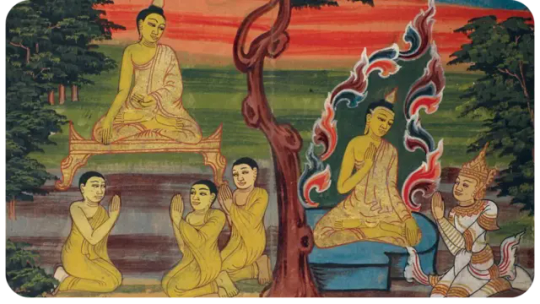
The Buddha warned him that he is on the path of self-destruction but Devadatta was relentless. Long story short, he was so consumed by greed that he eventually convinced prince Ajatasattu to kill his father, the king, and usurp the throne, while he assassinates the Buddha. As an attempt, he unleashed a raging elephant, but it was calmed by the loving-kindness of the Buddha, and his other attempts failed as well. Although Ajatasattu took the throne, the public was so resented of Devadatta that he was forced to withdraw his support. After this, he tried to cause a schism in the Order, but his followers were won over by the Buddha. Devadatta eventually died of sickness, his bad mental state supposedly ate into his physical health, however, in his final moments, he realized his mistakes.
The story of Devadatta, in my opinion, is an ideal inspiration for the first Sith, if we go with the notion that the Sith were Force-sensitives who left the Jedi Order. This is in Disney canon, I think. If we go with the fact that according to George Lucas, the Sith ruled the known universe before they destroyed themselves, we have a more complex situation, because that would imply that the first Jedi started out as a Sith apprentice or a Sith Lord, like Gautama Buddha started out as a prince living in luxury, and not a great spiritual teacher, or that the Sith were able to gain control over the galaxy, like Darth Sidious did, with the difference that there wasn't an Emperor, but many warring Sith Lords who all sought to rule the whole galaxy.
44 notes
·
View notes
Text



i brought it up in the random tags of a randomb reblog but I can't believe the digital colorist for the Hell Arc oneshot went with this weird purple color for Szayel's hellbound robes? (and in general the color choices on the gaki were ugly as sin) the obvious choice to me seemed to be orange, because it's both a common and iconic color for that kind of over the shoulder buddhist robe that would tie into Bleach's cosmology, but also the iconic orange robes of the Abashiri prison, something Yamamoto's bankai also seemed to have referenced.
They're prisoners not just of "hell" in the sense that jigoku etymologically is a literal "prison", but prisoners of the wheel of reincarnation, which is the basis of what buddhism and the search enlightenment and nirvana is, an escape from the cycle of suffering that is life the death.
14 notes
·
View notes
Text
The Dark Secret of Kung Fu Panda (Part 1)...
... Shifu is kind of a shitty teacher.

But only if you live in the West!
Apparently, you all like Panda analysis, so let's talk about cross-cultural translations, Theravada Buddhism, filial piety, and the ultimate futility of writers trying to impart a specific interpretation to a diverse audience - just to start! Then, I'll come back on Thursday and we can unpack WTF is the deal with that Dragon Scroll.
American movies can pick up a lot of box office cash in China, so they try like hell to stay inoffensive and relevant to Eastern and Western audiences. Often, they fail spectacularly.
But Kung Fu Panda pulled it off! ...With just a little wobble on the dismount.
Chinese audiences have little to complain about when it comes to these guys:

But here in the West, we can't seem to stop coming up with reasons all three of 'em got a raw deal - even the ones who were a little bit genocide-y.
And especially this li'l guy.
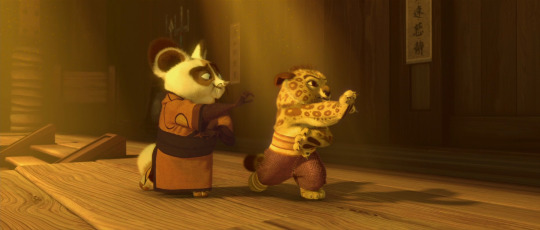
Aw, no, look how cute!
People will bend over backwards to defend that cute kid (and sexy adult), to the point of throwing Oogway, Shifu, Po, Tigress, or the whole franchise under a bus.

There are folks out there who are gonna die mad about Tai Lung's lack of a redemption arc and humiliating demise. Like, literally.
To their credit, the Kung Fu Panda team caught this after some early screenings and tried to fix it. Tai Lung's betrayal and attempt to steal the scroll just wasn't enough, so they added a massacre, and every villain after Tai Lung had an impressive kill count woven into their backstory right from the start.

(Not that it necessarily helped, if you happen to look this bad boy up on DeviantArt.)
In a wuxia film, and in Chinese culture in general, betraying your father/teacher, and asking that they betray their father/teacher is more than enough to make a villain. Given that filial piety is the basis of all ethics, as taught by Confucius himself, what went down in the Jade Palace was an attempt to burn society itself to the ground, all because one guy felt entitled to a shiny piece of paper. That is Captain Planet levels of self-destructive evil.
All three movie villains pulled off some violation of this fundamental ethical duty. Tai Lung betrayed his father/teacher. Lord Shen betrayed his parents - and managed to let his teacher go, with sadness and disappointment on both sides. Kai betrayed his adoptive brother - although from his point of view, his brother betrayed him, so he may be the most sympathetic of them through this lens.
The only way to impart this level of wrong across cultures is to add a lot of murdering, and even then it doesn't quite scan. Tai Lung didn't even necessarily kill anyone in the village; cartoons get nervous about the word "die" around these here parts, so they just said he "laid waste." Well, that could mean a lot of things! Does that guy deserve decades of solitary in a hell-prison for (in my mind) doing nothing more than calling out an unfair action and leaving a bad Yelp review of Mr. Ping's noodles?

I can't trust a bird who eats noodles, I don't care how cute his hat is!
So, it's not just that the violation of ethics doesn't carry, the concept of "unfair" crept into a place where it really doesn't belong. Traditionally, it is perfectly acceptable for a Kung Fu Master to be a total piece of shit who motivates his students to learn out of sheer spite and puts them through hell.
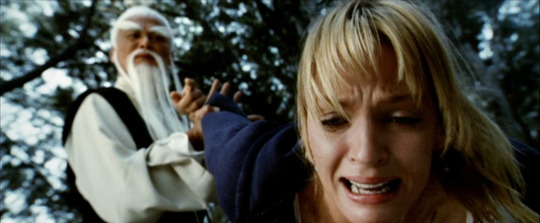
Oh, yeah, I remember him. That moustache looks familiar...
If we're coming from a place where we buy that trope and expect it to be played straight, Shifu's mistake was being too nice to Tai Lung. His student's self-esteem was insufficiently crushed! That boy had the nerve to break his own Master's leg! Thank goodness Shifu became a cold, uncaring, emotionally-distant task master - just in time to raise Tigress right!

Yes. Good. Never let on that you're pleased with anything your student does. That'll keep 'em in line!
But a Western audience isn't going to buy that. Shifu just looks like a jerk, and Tigress is a jerk... In fact, all of the Five, save Viper (who is just that nice) seem like jerks, and Oogway is a troll.

"Oh, I'm sorry, did you have something urgent to do? I think blowing out these candles, one-by-one, is rather important too."
Being an utter troll is also a valid way to teach kung fu, and Buddhist practices in general, which is definitely where Oogway is coming from. I peg him as a Theravada Buddhist, due to the way he teaches, and one scene in particular from the third movie.

Enlightenment isn't something you just hand over like a piece of paper, it's something everyone has to find for themself, in their own way. It's not possible to teach Tai Lung or Po self worth, and it's not possible to teach Shifu to lighten up, so the best a smart teacher can do is give them a good nudge, then step back and see what happens.
...Even if that "nudge" requires one to ascend to the Spirit Realm and leave your most stubborn student to clean up his own damn mess.
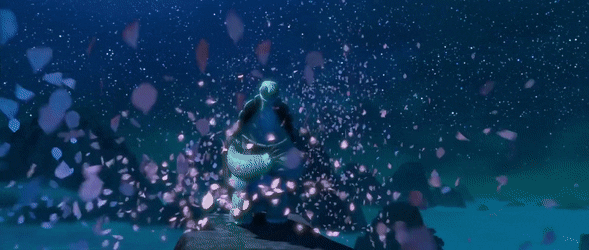
But there aren't as many Buddhists watching in the West, so what's a writer to do?
Well, they split the difference. Tigress did grow up better than Tai Lung, in accordance with the tropes, but it turns out she's not done learning and growing, and neither is Shifu (or the rest of the Five, but they don't get much of an arc. There are time constraints!). Their arrogance and lack of flexibility render them incapable of working with someone like Po - and they gotta figure out what they're doing wrong fast, 'cos Shifu's other teaching mistake is on his way back! In China, Shifu is learning to be a better teacher. In the West, he's learning to stop being a shitty teacher! And it takes him all three movies to grasp the humility he needs to learn from Po. Tigress, on the other hand, learns to respect Po and soft style by the end of film one.
When Western values are applied, Shifu comes off as a very slow learner, due to his own impatience and inability to slow down. But that's okay. He does learn, he's clearly trying, and we love him anyway.
Well, most of us do. Some of us can't get over that cute, fluffy little leopard, and we don't buy the (admittedly imperfect) attempt to make this story intelligible across cultures. These folks tend to focus their ire, much like Tai Lung himself, on that useless piece of paper the troll stuffed in a temple like it was something important, and the jerk led Tai Lung to believe was rightfully his. Why can't the boy just have his useless piece of paper, huh?
Well, I'll come back later and I'll tell ya.
#kung fu panda#po#shifu#oogway#tai lung#buddhism#cross cultural translation#stories#confucianism#villains
101 notes
·
View notes